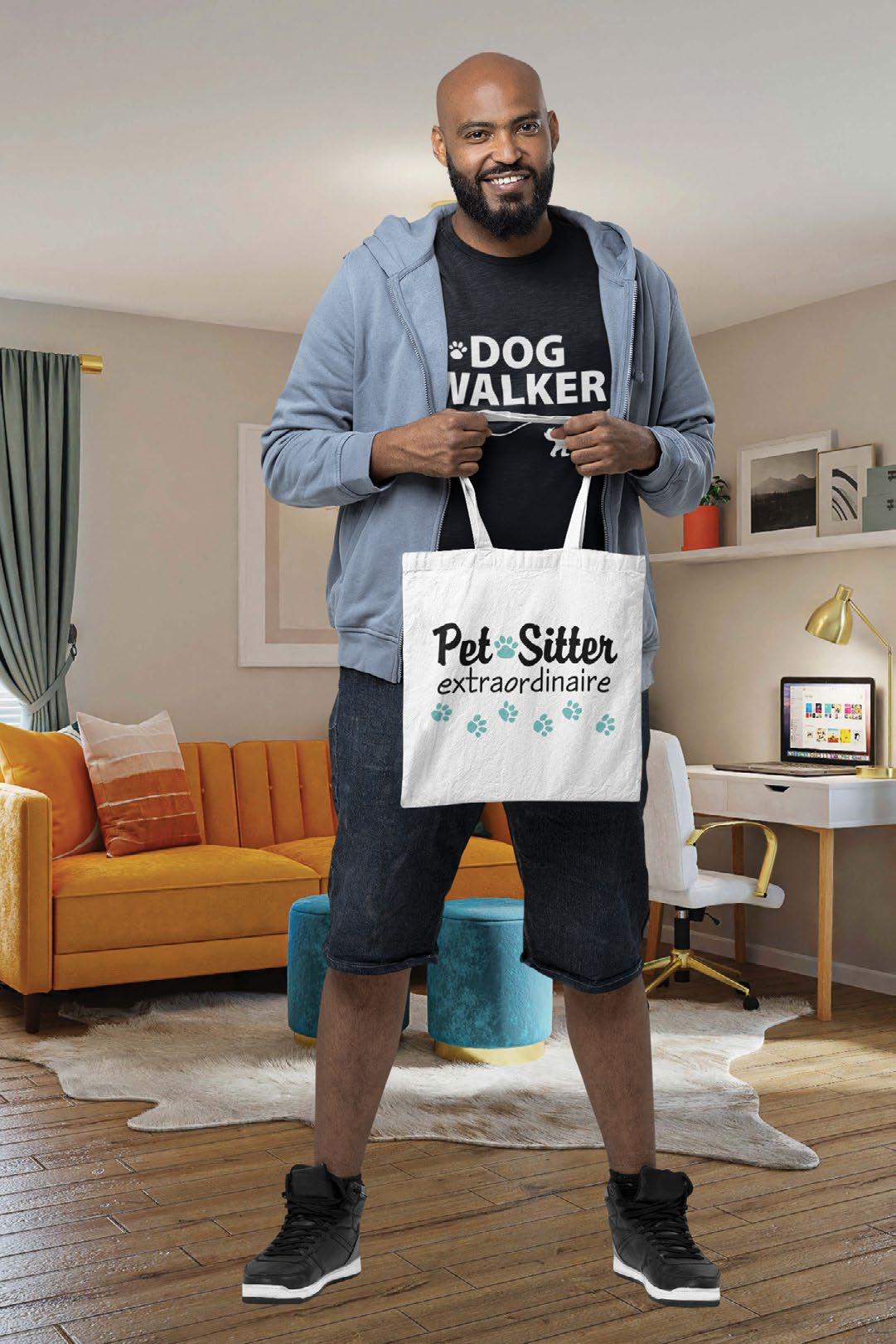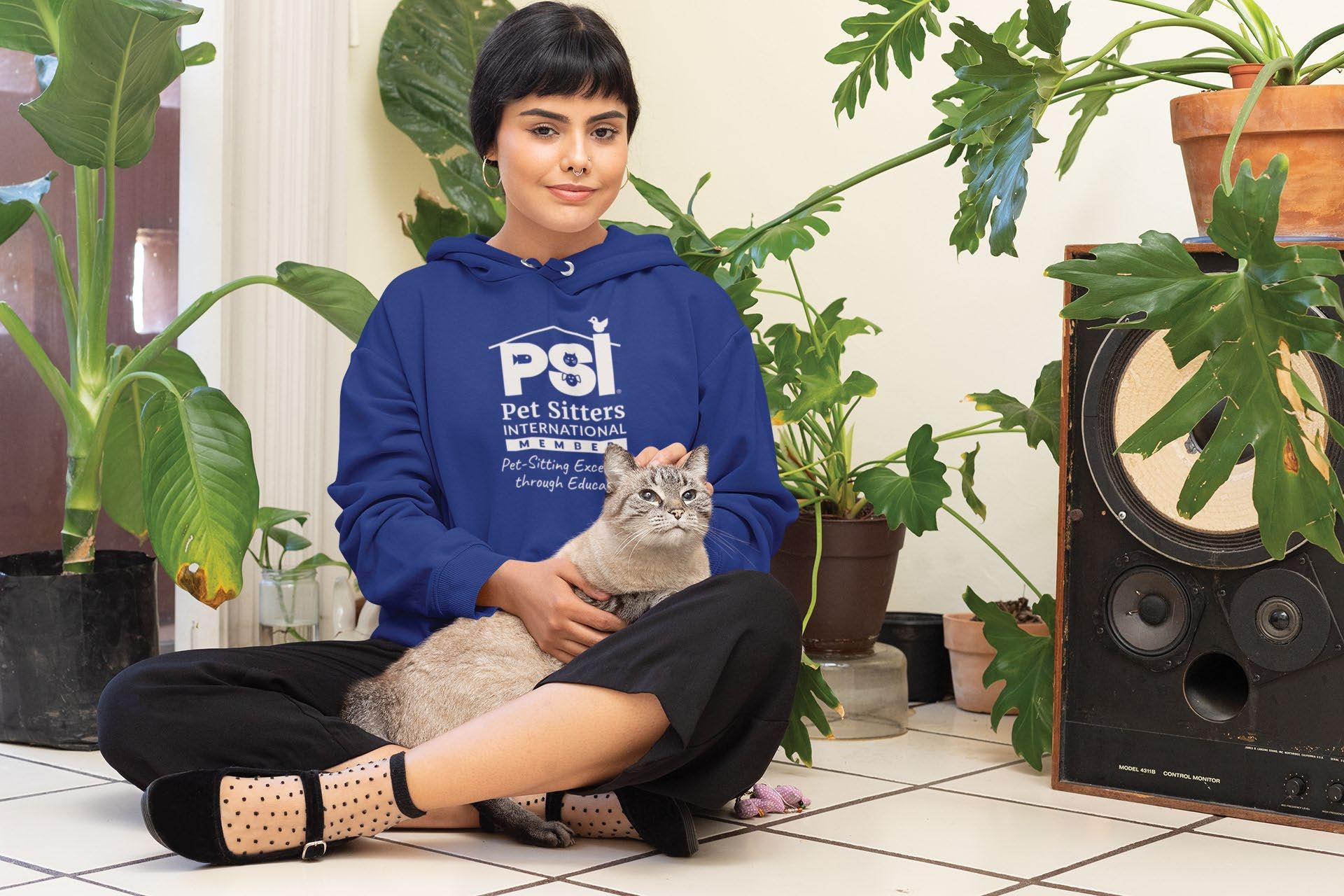
Hot Weather Hazards
Keeping pets safe

Feathered Friends
Offering avian care



Keeping pets safe

Feathered Friends
Offering avian care




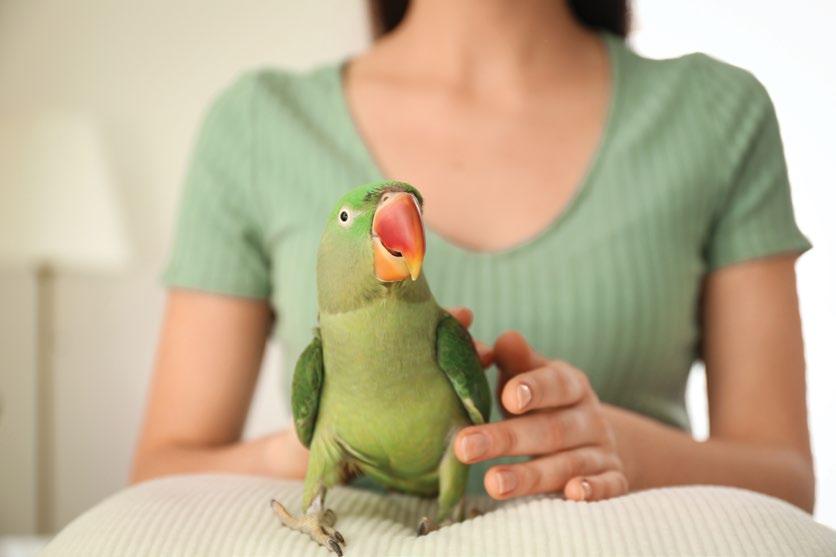
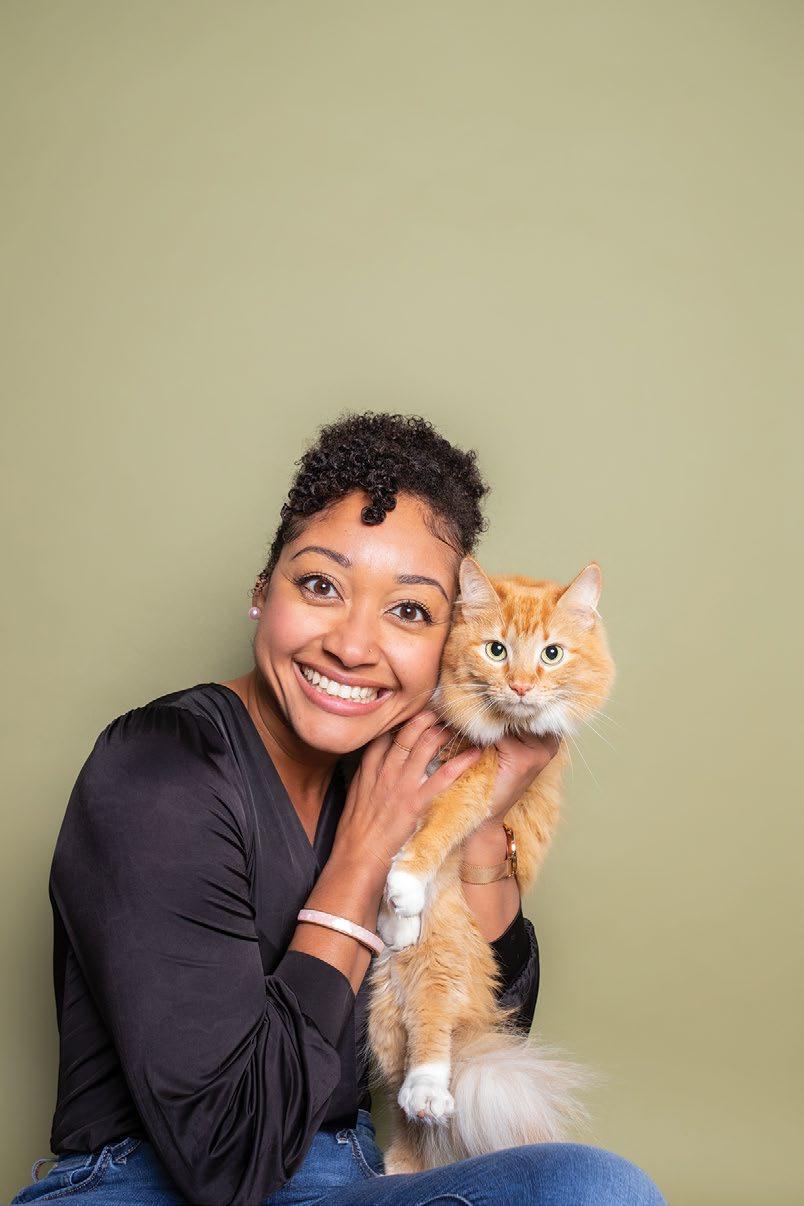
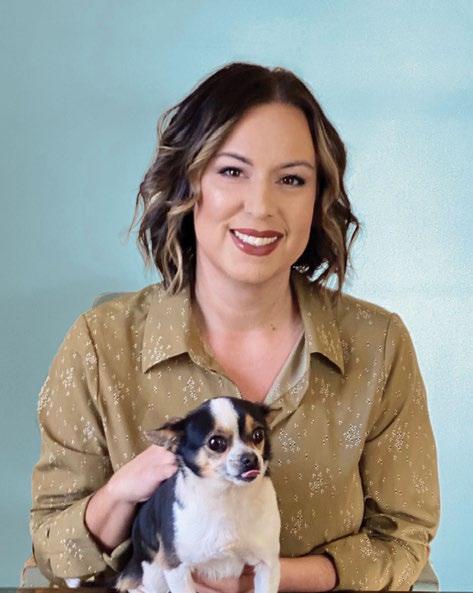
September is Pet-Sitter Education Month, and while it’s a dedicated month we’ve set aside to specifically focus on the educational resources available to today’s pet sitters and dog walkers, education is PSI’s focus year-round. In fact, our motto from the beginning has been “Pet-Sitting Excellence through Education.”
Education is the kindling of a flame, not the filling of a vessel. -Socrates
I love this quote from Socrates because, for me, it captures the importance—and power—of continuing education.
When you take advantage of training, conferences, online courses and certifications as a pet-care professional, you aren’t just filling yourself with more knowledge; the new information you learn can spark interests and ignite passions that take your businesses to a new level or even set you on a new trajectory altogether!
I’ve seen this happen so many times with PSI members. I can think of a member who signed up for courses related to reactive dogs just to help them with their own dog, but then discovered they had a passion for the topic—and reinvented their business to specialize in offering care for reactive dogs.
I can think of other pet sitters who took some basic online trainings to help them better understand using social media for their business, to then realize they had a knack for it and are now able to assist other pet sitters with their social-media marketing!
Challenge 3: Participate in at least one new training before the end of 2024.
You may be right in the middle of your busy summer season as you’re reading this, and signing up for anything new may be the last idea on your list—but I encourage you to take this challenge.
Take time now to give thought to what you’d like (or what you need) to learn more about to help improve your business or the service you provide to your clients. If you’ve stayed up to date on pet health and behavior training, you may need to focus on training related to business operations and marketing—or vice versa.
Remember, too, that PSI has a variety of free on-demand webinars available to you in the Members Area of petsit.com, so that’s a great place to look for short, no-cost online training. As a PSI member, you also receive a discounted price on any of PSI’s online courses.
Don’t forget, local business networks in your area—or even community colleges—may offer free or low-cost classes to the general public. Sometimes public libraries do as well—and these local resources often have training that focus on marketing, customer service and more for small businesses.
We know we’ll also see many of you in Niagara Falls for an amazing, in-person learning opportunity!
I encourage you to accept this challenge and sign up for a new course or training! I look forward to hearing what trainings you take advantage of, and if you need any suggestions, you can always email me at beth@petsit.com.
Beth
Beth Stultz-Hairston, PSI PresidentPatti Moran, Publisher
Beth Stultz-Hairston, Editor
Michelle Boles, Layout and Design
ADVERTISING
PSI Advertising
P.O. Box 457, Pfafftown, NC 27040 advertising@petsit.com
HOW TO REACH US
P.O. Box 457
Pfafftown, NC 27040
Phone: (336) 983-9222, Press 1 for Member Services
Email: info@petsit.com
Website: www.petsit.com
OFFICE HOURS
Monday—Thursday, 9:30 a.m.—5:00 p.m., Eastern Time
STAFF
Patti Moran, Founder & CEO
Beth Stultz-Hairston, President
Debbie Leonard, Systems Operations Manager
Michelle Boles, Graphic Design Manager
Meghann Evans, Education & Outreach Manager
Heather Smith, Membership Programs Coordinator
©Copyright 2024 by Pet Sitters International Inc. All rights reserved. Pet Sitter’s World is the official publication of Pet Sitters International, Inc. (PSI). Printed in the USA.
Pet Sitter’s World is published by PSI and is available exclusively through PSI membership. No portion of this publication may be reprinted or reproduced without the written consent of PSI and all authorized reproductions must cite Pet Sitter’s World, published by Pet Sitters International, as the source. Requests for reprint permission should be addressed to Editor, Pet Sitter’s World, P.O. Box 457 Pfafftown, NC 27040.
Publication of any article or advertisement should not be deemed an endorsement of the opinions expressed or products advertised. Pet Sitter’s World is a trademark of PSI.
Whether you’ve just joined PSI or are a long-time member, these resources will help you take full advantage of your PSI membership.
Information is right at your fingertips 24/7, 365 days a year in the Members Area of petsit.com. Log in to access:
• Free Monthly Member Toolkit
• Free custom business profile on PSI’s Pet Sitter Locator
• PSI member logos
• Customizable, downloadable pet-sitter forms
• Customizable, downloadable promotional materials
• Ready-to-use social-media images
Access the business tools you need—at special discounts—through PSI’s Preferred Providers:
• Pet-sitter liability insurance and bonding at a group rate
• Discounted background checks for you and staff
• Assistance with health and supplemental insurance
As a member you can increase and demonstrate your knowledge as a pet-care business owner. Resources and opportunities include:
• Pet Sitter’s World magazine
• Free live and on-demand webinars
• The PSI Blog
• Discounted rates on PSI’s online courses
• Discounted rate on PETSIT PRO
• Opportunity to earn the CPPS-Certified Professional Pet Sitter® designation
PSI membership also offers strength in numbers. You can take advantage of a variety of opportunities to share your lessons learned and learn from fellow PSI members. Opportunities include:
• Professional Pet Sitters Chat, PSI’s private, members-only Facebook group
• Pet Sitter World, PSI’s annual in-person conference
• FOCUS, PSI’s one-day online summit for pet sitters and dog walkers
• PSI-Registered Networks
• PSI’s Facebook, Instagram and YouTube
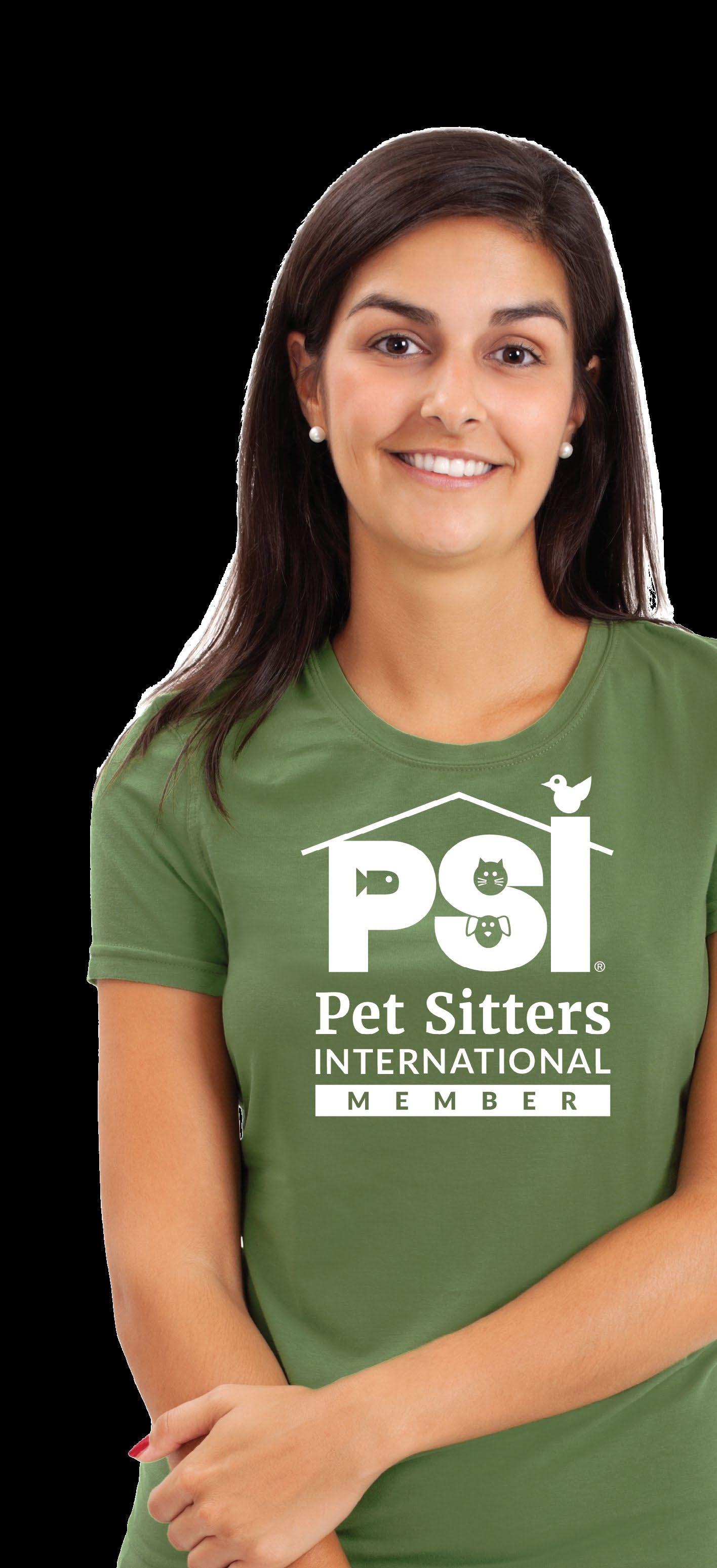
It’s vital that pet-care professionals practice self-care year-round, but the summer months present some unique challenges that pet sitters and dog walkers should be aware of. If your business is located in areas experiencing rising temperatures (and likely increased pet-sitting requests) this time of year, be sure to keep these tips in mind to ensure hot weather doesn’t get you—and your business—in hot water.
1. Beware of hot weather dangers. Whether you are spending time with pets outside or driving from assignment to assignment, you should take some steps to protect your skin from sunburn—and skin cancer.
Wear water-resistant sunscreen of SPF 15 or higher and keep it in your car or pet-sitter bag so you can reapply it every two hours. Wearing long-sleeved shirts and long pants, as well as a hat with at least a 3-inch brim and sunglasses, can also help protect your face and eyes. For more tips, visit www.skincancer.org
Avoid walking dogs and playing outside with pets during the hottest hours of the day. It’s important to recognize the signs of heat exhaustion. According to Mayo Clinic, possible heat exhaustion symptoms may include: “cool, moist skin with goose bumps when in the heat; heavy sweating; faintness; dizziness; fatigue; weak, rapid pulse; low blood pressure upon standing; muscle cramps; nausea; headache.” If you think you may be suffering from heat exhaustion, find a cool place, rest and replenish fluids with water or sports drinks. Mayo Clinic also advises that you call a doctor if symptoms worsen or don’t improve within an hour and seek medical attention if your body temperature reaches 104 F (40 C). You can learn more about heat exhaustion on the Mayo Clinic Website (keyword: “heat exhaustion”).

2. Learn when (and how) to say, “I’m booked.” The summer vacation season is often a very busy time for both professional pet sitters and dog walkers. You may also find your business bombarded with last-minute vacation sit requests. It’s important to recognize your limitations and know how many visits you can complete in a day without
compromising the care you provide or jeopardizing your health or safety. When your schedule is overbooked and you are short on time, it’s much easier to make careless mistakes such as forgetting to lock the door behind you or leaving your keys in your car. You may also overlook red flags you would typically catch, such as a broken window or even misplaced items in a client’s home.

The best way to be able to say “no” (and to not feel as guilty about it) is to plan ahead—know when you are at capacity, then have a response ready. This way, you will not be caught off guard and will not feel pressure to simply give in and say “yes.” Be prepared with a list of other professional pet sitters and dog walkers you network with (and trust). This way, when a last-minute pet owner calls, you can have the confidence to say: “I would love to be able to care for Fluffy, but I cap my schedule at a certain number of visits to ensure all furry clients receive the absolute best possible care. However, I know a wonderful professional pet sitter who also services your area that I can refer you to this time, but I’m happy to take your information to put you on my email list and would love to pet sit for you in the future.”
3. Beware of break-ins. Many agencies report that break-ins (of both homes and automobiles) increase during the warmer months. As a pet sitter or dog walker, it’s important to be aware of your surroundings when you arrive at a client’s home. If an unexpected vehicle and/or person is in the client’s driveway, do not stop. Contact the client to determine if he or she is expecting anyone to be at the home. If you cannot reach the client and/or the client did not expect anyone at the home, contact local law enforcement; do not return to the home until law enforcement arrives and determines the home is safe to enter.
If you arrive at a client’s home and find open and/or broken windows or doors, do not enter the home. Immediately return to your vehicle, leave the premises, and notify the clients and local law enforcement. Again, while your first thought is likely to go in and check on the pet(s), do not return to the home until law enforcement arrives and allows you to enter.
You should also lock the doors of your vehicle before you enter a home for a visit. Then, once you enter the home, be sure to lock the doors behind you. This is easy to forget as your schedule is busy and your first thought is getting inside to visit the pet(s). However, locking both your vehicle and the home ensures that no one can follow you inside (or sneak in while you are busy caring for the pets) or access your vehicle while you are inside.
Keep your keys and phone with you at all times during the visit. This ensures a) that you cannot accidentally get locked out of a client’s home and b) that you are able to have quick access to your phone in the event of an emergency.
As a professional pet sitter or dog walker, you should also be mindful that you do not keep any client information or forms with personal information that could put clients’ pets or homes in danger should your automobile be broken into.
4. Focus on your health. It’s easy to put yourself last— especially during the extra-busy summer months. Don’t make this mistake. Make time to eat healthy, get enough sleep and exercise. Many pet sitters find that preparing meals in advance—quick, balanced meals or smoothies they can bring along with them—is one of the best ways to avoid skipping meals or being tempted by the nearest drive-thru.
Regular doctor visits also help you catch any potential medical issues or injuries early. Don’t ignore aches and pains that could indicate pulled muscles or other injuries that could prove debilitating if not addressed. Also, don’t skimp on buying quality shoes (your feet will thank you!), and remember to wear sunscreen.
In addition to your physical well-being, focus on your mental health as well. Burnout and compassion fatigue are very real issues in our industry—and, if left unaddressed, will begin to chip away at the professionalism of your business and the pet-sitting industry at large. (If you are unsure of what pet sitter burnout or pet sitter compassion fatigue are or how they are different, please be sure to go watch the session recordings from PSI’s Pet Sitter Mental Health and Wellness Summit at petsit.com/wellness The free online summit in May also included sessions on practicing mindfulness as a pet sitter and navigating the grief associated with losing pets.
If you have any health (physical or mental) concerns, be sure to contact your doctor. Just as we encourage pet owners to leave pet sitting to professionals (like you), it’s important that you look to professionals for medical and/or mental-health advice.
Running a small business—particularly one in the petcare services industry—seems to leave little time for much else, but it does not mean that you have to put yourself at the bottom of your to-do list.
In fact, moving yourself higher up on your list can help you offer better service to your clients and keep yourself safe. An overworked, overtired, and overcommitted pet sitter or dog walker is less alert, may not recognize red flags that could indicate danger and may make simple mistakes that put them in harm’s way. Practicing self-care is an important step to keeping yourself safe and business successful during the summer months and year-round!
Take the Pet Sitter’s World Quiz to earn renewal CEUs.
You can get a maximum of 10 CEUs per three-year renewal cycle with these quizzes. Look for a new one in each issue of Pet Sitter’s World!
If you are a CPPS, you can now earn one (1) CEU for answering all five of these questions correctly. The answers can all be found in the pages of this issue of Pet Sitter’s World.
Important: To submit your quiz answers, please visit petsit.com/ceu-request to fill out and submit PSI’s CEU Request Form. Quiz answers should be submitted through this form and not emailed directly to PSI.
1. According to the State of the Industry Survey summary included in this issue, __ percent of PSI members who use staff sitters indicated they use employees, and __ percent indicated they use ICs.
2. True or False: Cats are warmblooded animals with an average body temperature of 103°F or 39.44°C.
3. Fill in the blank: Hub pages use ____________ to guide users and search engines to other more detailed pages on your website.
4. List three of the seven steps shared for creating the right admin/managerial position and filling it with the right team member.
5. True or False: The number of dog bite claims has continued to stay about the same each year, but claim costs have increased significantly since 2003.
View the complete list of CPPS renewal CEU options. In the Members Area of petsit.com, use the Certification Program drop-down link to Certification Renewal > Certification Renewal Options.

The rising temperatures signal the fun summer months of backyard barbecues, vacations and more time spent outside (with a cool drink in hand). But the scorching days of summer can also present unique hazards for your dog—and dogs in your care.
Protect the paws. You’ve likely seen the Facebook post circulating around this time of year—a photo originally posted by Moon Valley Canine Training in 2015 with this quick tip: “The five-second rule: Place the back of your hand on the pavement. If you cannot hold it for five seconds, it’s too hot to walk your dog.”
The post quickly went viral and for good reason—it’s a simple, common-sense message and an important reminder for pet owners who simply don’t think about how the hot pavement can impact their dogs.
Forgoing paved areas for grassy spots for the dog to walk and play is advisable, and also avoid peak sun hours. For many pet sitters, summer is a busy time, with more pet owners seeking your services due to their planned vacations. Your schedule may be heavy, but if at all possible, try not to walk dogs during the hottest part of the day. If possible, complete most walks before 10 a.m. or after 4 p.m. On the hottest days, suggest to clients that dog walks be substituted with quick potty breaks and playtime indoors.
Keep cool with water and treats.
Denise Fleck, Pet Safety Crusader™, advises planning ahead on hot days and having
cool, fun food on hand. In addition to making sure dogs are drinking plenty of water, frozen treats—store bought or homemade—are great to have available on hot days. Fleck offers this simple recipe for electrolyte ice cubes: Dissolve 1 Tablespoon salt and 1 Tablespoon sugar in 4 cups of water (using pure coconut water—no sugar/artificial sweetener added—is a plus), and then freeze in ice cube trays, muffin tins, etc.
Monitor temperatures indoors also.
While it’s important to not have pets outside in the heat of the day, hot weather means inside temperatures can be more difficult to regulate as well. While it may be tempting to increase the temperature in your home to save on energy costs while you are at work or away on vacation, understand high temperatures inside can be dangerous to pets also. A good rule of thumb is if it’s too warm for you, it’s also too warm for your pets. Be sure to ask vacation pet-sitting clients about their thermostat settings at the meet and greet and discuss that you’ll need to note they have given you permission to adjust the indoor temperature if necessary for the pets’ comfort.
Visit The PSI Blog for more hot weather safety tips for pets.—PSI Staff

Pet Sitters International conducts its State of the Industry Survey every two years to gather the most up-to-date information on the professional pet-sitting industry. This is the most comprehensive survey in the professional pet-sitting industry.
PSI gathers and analyzes the survey data to provide members with important information, including:
• Member demographic information
• Client demographic information
• Data on pet-sitter practices, including pets cared for, services offered, and staff used
• Important financial statistics on average business revenues and fees charged
PSI conducted its 2024 State of the Industry Survey online January 28 through March 6, 2024. Our audience was active PSI members, and the survey received a 32% response rate. Based on this response rate, the 2023 survey has a 99% confidence level with less than a 4% margin of error for our audience.
While the majority of respondents were located in either the United States (94%) or Canada (5%), PSI members from Aruba, Brazil, France, Hong Kong, Netherlands, Spain, Turkey, Taiwan, United Kingdom and United Arab Emirates also completed this year’s survey.
The following pages provide a brief overview of key data points from the 2024 survey, but additional information including data on business practices and technology use, as well as additional data analysis segmented by the United States and Canada, will be made available later this year.
Thank you to every PSI member who completed this year’s survey! The compilation and analysis of this data would not have been possible without your participation.
While we view every member as unique, the survey does allow us to generate a profile of common characteristics shared by PSI members.


Source: PSI’s 2024 State of the Industry Survey Results
According to PSI’s 2024 State of the Industry Survey:
• PSI’s typical member is female (90%), married (52%), and has no human children living at home (83%). The average age is 54.
• The typical member has pursued post-secondary education (92%), with 69% having completed an associate’s degree or higher.
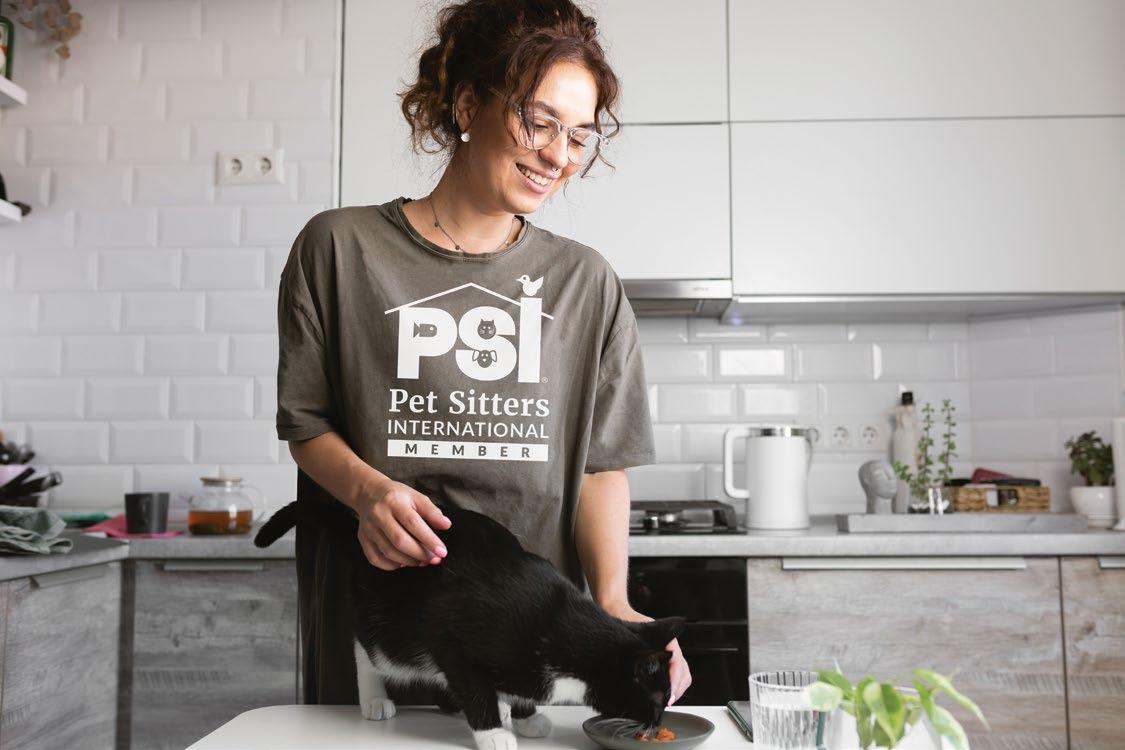
• 99% of all PSI member businesses are independently owned (not part of a franchise).
• 75% carry both pet-sitter liability insurance and bonding. The top choices for providers are Business Insurers of the Carolinas (U.S.) and BINKS (Canada).
• 66% of PSI pet sitters have been operating their pet-sitting services for six or more years, and 30% of PSI members have been in business more than 15 years.
The majority of PSI members indicate they offer care for the following pet types:

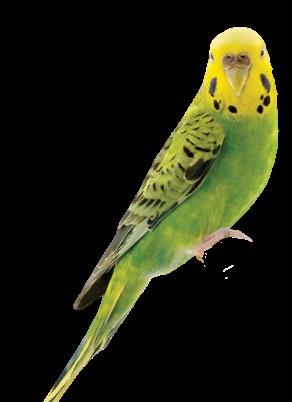
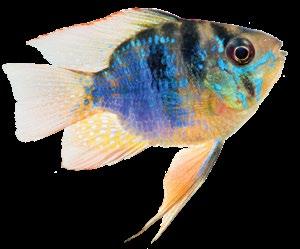

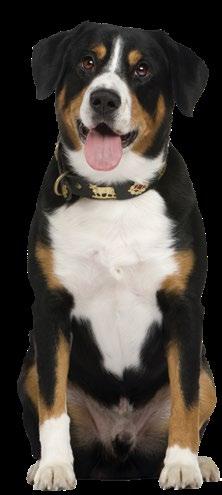

Compared to 2022: The percentage of members caring for cats went up one percentage point and the percentage of members offering care for exotic pets remained the same. However, the percentage of members caring for all other pet types decreased from the results noted in our 2022 survey, in which 95% offered care for dogs, 75% offered care for small animals, 73% offered care for birds, 70% offered care for freshwater fish, and 59% offered care for reptiles and amphibians. The percentage of members caring for other pet types—saltwater fish, livestock, and horses—also decreased compared to the 2022 survey
Source: PSI’s 2024 State of the Industry Survey Results
The majority of members indicated they offer basic pet-care visits (94%), dog walking (84%), overnight sitting (58%), and pet transportation (52%).


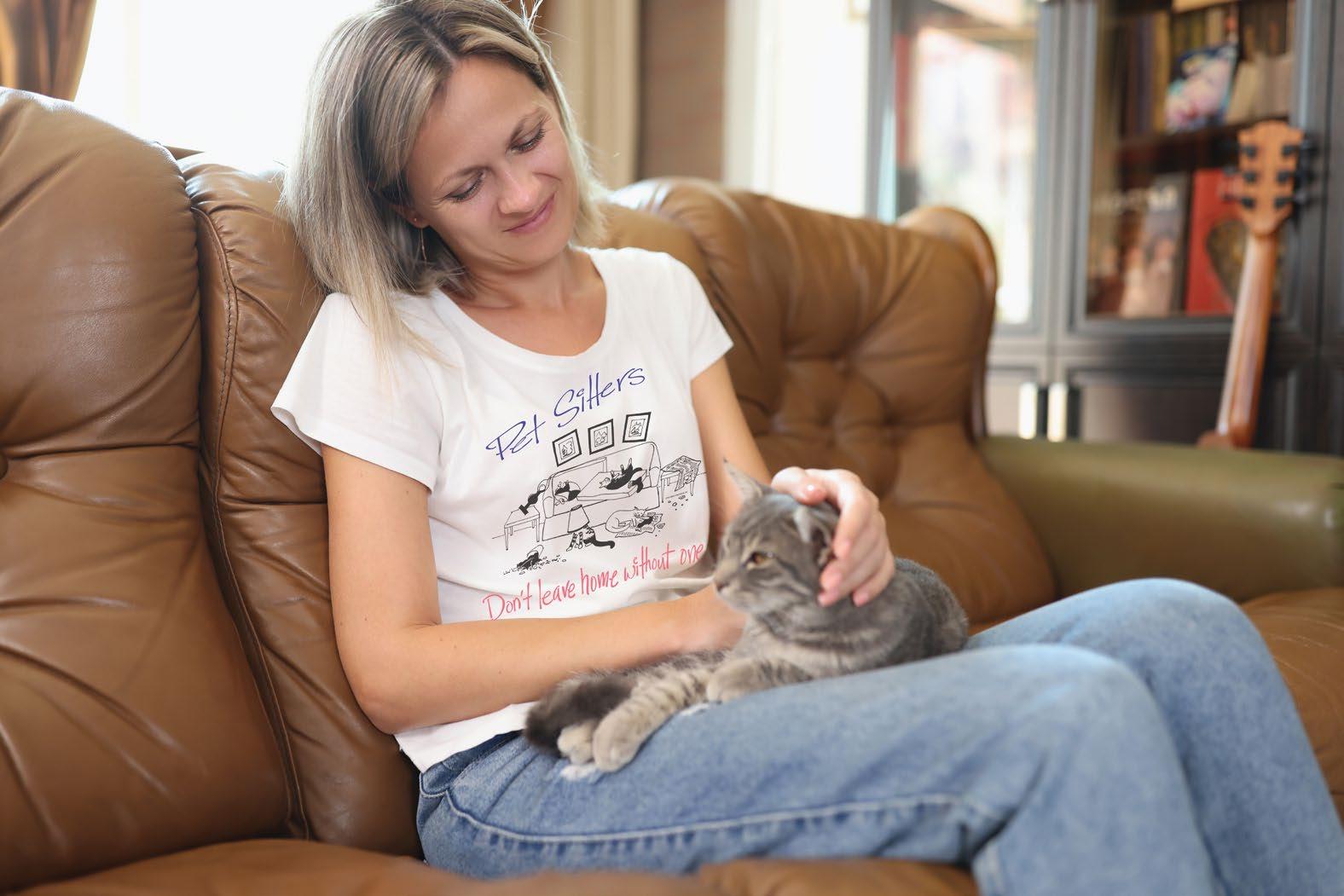
On average, PSI pet sitters in the U.S. served 114 households and average, served 133 households
• The average gross revenue for U.S. pet sitters in 2023 was $100,537 USD (compared to $94,563 USD in 2022 and $68,699 USD in 2021).
• The average gross revenue for Canadian pet sitters in 2023 was $100,764 CAN (compared to $91,909 CAN in 2022 and $59,203 CAN in 2021).
Please note: Due to international membership numbers and response rates, PSI is unable to provide average service times and fees for pet sitters outside of the U.S. and Canada at this time.
Source: PSI’s 2024 State of the Industry Survey Results

• PSI members indicated that (based on their personal observation) 48% of their client base would be described as middle-to-high income.
• Members also indicated that clients most frequently pay by paper check (24%) or credit/debit card (22%). While these were also the top-two payment methods indicated in PSI’s 2022 survey, we did see a notable decrease in clients paying by check (33% paid by check in the 2022 survey).
Source: PSI’s 2024 State of the Industry Survey Results

• When asked about their role in their businesses, 85% of members indicated they “do it all (business management + pet-sitting visits)”; 11% indicated they manage the business and provide backup for staff sitters; 3% manage, but do no pet-sitting visits; and 1% have an office manager and only pet sit.
• The majority of PSI members indicated they do not use staff sitters. In the U.S., 69% indicated it was just themselves or themselves plus a business partner (no staff). In Canada, 65% of members indicated it was just themselves or themselves plus a business partner (no staff).
• Overall, 31% of PSI members indicated they used staff sitters. Of these, 52% use employees, 41% use independent contractors and 7% use both.
• 86% of members using employees indicated they provide Workers’ Compensation Insurance.
• 73% of members using independent contractors indicated they require proof of a background check, and 72% use an independent contractor agreement.
Continuing Trend Alert: The percentage of PSI member pet-sitting businesses with staff who use employees (and not ICs) continues to increase! In this year’s survey, 52% of members who use staff sitters indicated they use employees, compared to 43% in the 2022 survey and 32% in the 2020 survey. This means the use of ICs continues to decline—with 41% indicating they use ICs in this year’s survey, compared to 49% in the 2022 survey and 61% in the 2020 survey.
Source: PSI’s 2024 State of the Industry Survey Results







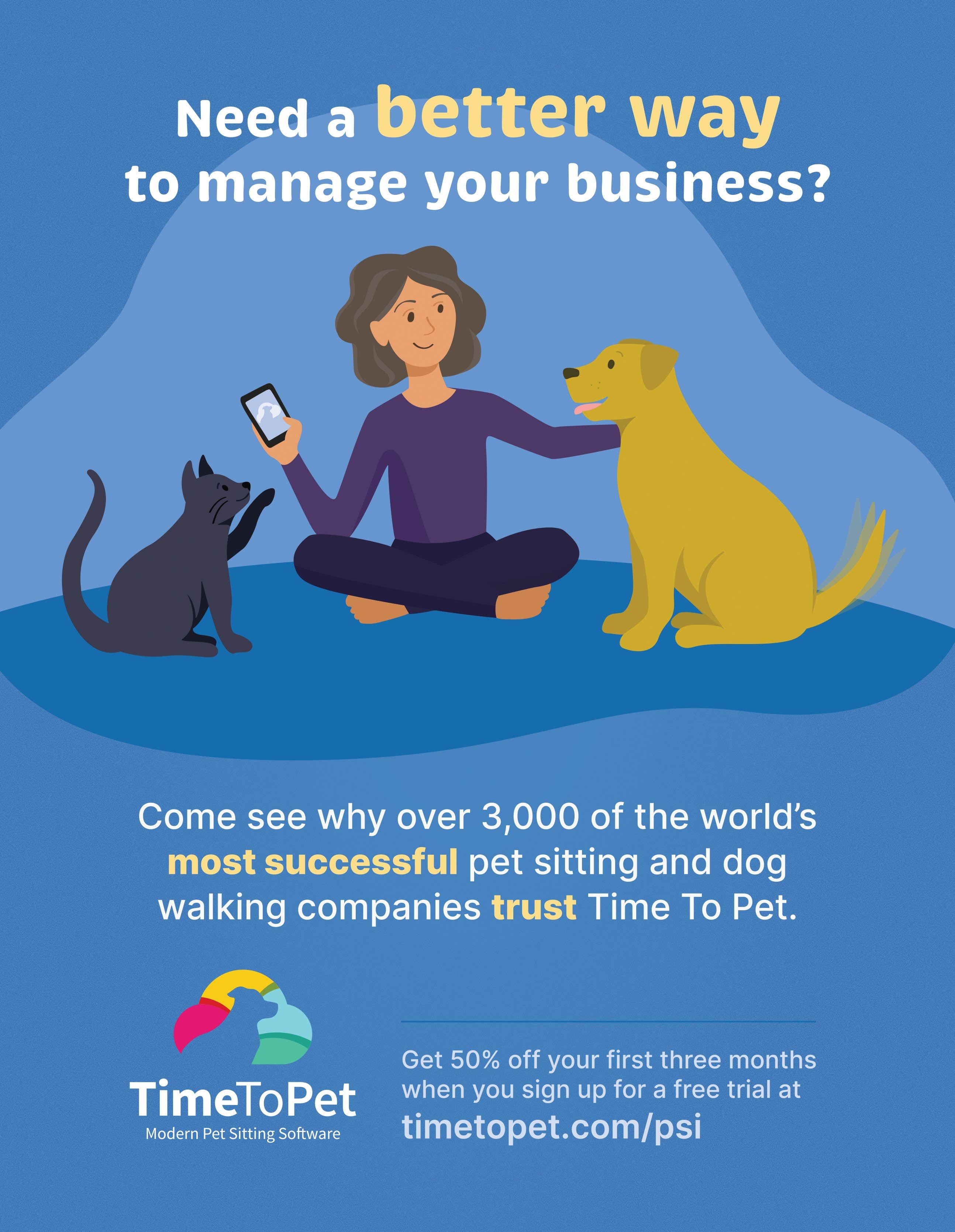
PSI’s Pet Sitter of the Year™ Award is the industry’s highest honor. The recipient serves as the face of the industry and receives international exposure via PSI’s website, social media accounts, member magazine and media-relations efforts.
All active PSI members of at least three (3) years (regardless of location or business size) are eligible to apply for the award.
PSI members are encouraged to nominate themselves and must include three references. Two of these references must be current clients.
• International recognition via news releases, social media and placement on petsit.com
• PSY logo to use on your website and other marketing materials
• Free registrations to PSI’s FOCUS Summit and Pet Sitter World conference
• Waived testing fee for the exam to obtain the CPPS® designation (or waived renewal fee if already Certified)
• $500 cash prize + recognition at awards ceremony during PSI’s conference
• One-year free PSI membership (membership fee will be waived at the recipient’s next renewal date)


While we've continued to see news stories over the past decade of authorities fining—or charging—"pet sitters" who are boarding pets in their home without the appropriate license or permit, we still hear from pet-care providers (even more experienced ones) who are not aware of their local regulations.
While PSI’s focus is (and always has been) on pet sitting—in the clients’ homes—the topic of inhome boarding often comes up in conversations with members. Many members express their frustrations with fly-by-night “sitters” (really, boarders) promoting their services on online apps. On the other hand, others have expressed interest in adding in-home boarding to the services they offer, and some have added the in-your-home care additional coverage to their pet-sitter insurance policies (if you do offer the service, make sure you are insured for it!).
While in-home boarding is not pet sitting as defined by PSI, we feel it’s important to make sure PSI members are educated about this topic and about the regulations regarding in-home boarding where they live.
For U.S. pet sitters, we recommend speaking to your state’s Department of
Agriculture. We’ve reached out to the North Carolina Department of Agriculture & Consumer Services in the past, and they shared that for our state, if you bring one dog or cat into your home (and are paid for your services) and have not applied for a boarding license and had your home inspected and approved, you are in violation of the law. This is a misdemeanor, and each day is a different charge.
Specific regulations will vary depending upon where your business is located. In Quebec, for example, there are bylaws that focus on those who are boarding more than three dogs, which requires a license. We recommend searching “Do you need a license to board pets in [your province]?” to research your local regulations.
With this in mind, we encourage you—if you are offering any type of in-home boarding for pay, are considering offering the service or if you know someone who does—to check out the laws where you live.
Remember, ignorance cannot be used as an excuse, and violating state or provincial laws regarding this service can result in huge fines for your business—and have a negative impact on your professional reputation! —PSI Staff



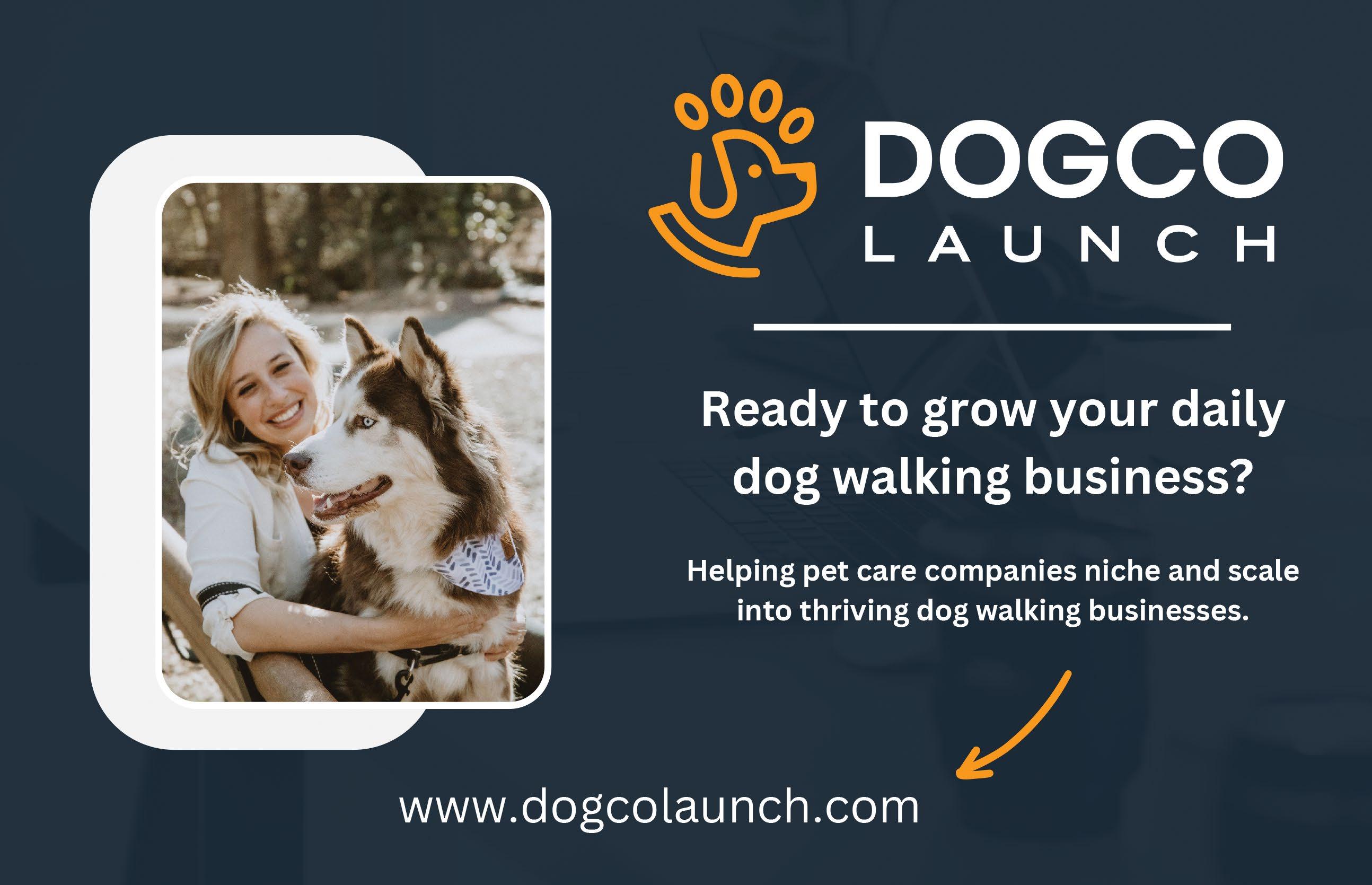


Are you taking advantage of

Each month you receive your Monthly Member Toolkit, which includes:
• A featured member resource— often a pet-sitter form template, client handout or webinar
• Trending articles to share in your client newsletter and/or on social media
• A featured article or blog post focused on the month’s toolkit theme
• Social-media images and sample captions your business can post online
Resources are emailed to you each Monday at the email address associated with your membership.
If you are not receiving PSI’s weekly emails, please contact PSI Member Services at info@petsit.com.
As a professional pet-sitting or dog-walking business owner you should prioritize continuing education and relevant credentials to ensure you offer the best possible pet care. You also need to make sure that your current and potential clients are aware of your qualifications.
Below we’ve included some ideas of where you can highlight information about your credentials and continuing education—but be sure to read to the end where we share a mistake you might be making that can result in your credentials being a lot less appealing to potential clients.

A survey by Verisign found that 84% of consumers felt a website made a small business more credible—so it’s important to have a company website. A strong web presence can help you attract more clients and better communicate your services and credentials to local pet parents.
But where/how should you highlight your credentials and education on your
Your website’s homepage. One simple—and popular—way is to include your credentials and certifications in your website’s homepage, as that is often the first page a site visitor will see. You don’t want potential clients to have to search your site to learn more about your credentials! The icons you display may include your PSI member logo (if applicable), your CPPS® logo (if certified), your pet first aid logo (if you have current pet first aid training), and your health and sanitation certificate badge (if you’ve taken PSI’s certificate course), as well as icons indicating you are insured and/or background checked and icons for other trainings or certifications you’ve obtained.
The screenshot below is from the website of PSI member Tracy Zipay, The Pawsitive Pets Sitter LLC, in Phoenix, Arizona. This is a great example of using your website’s footer to highlight your educational credentials and professional affiliations.
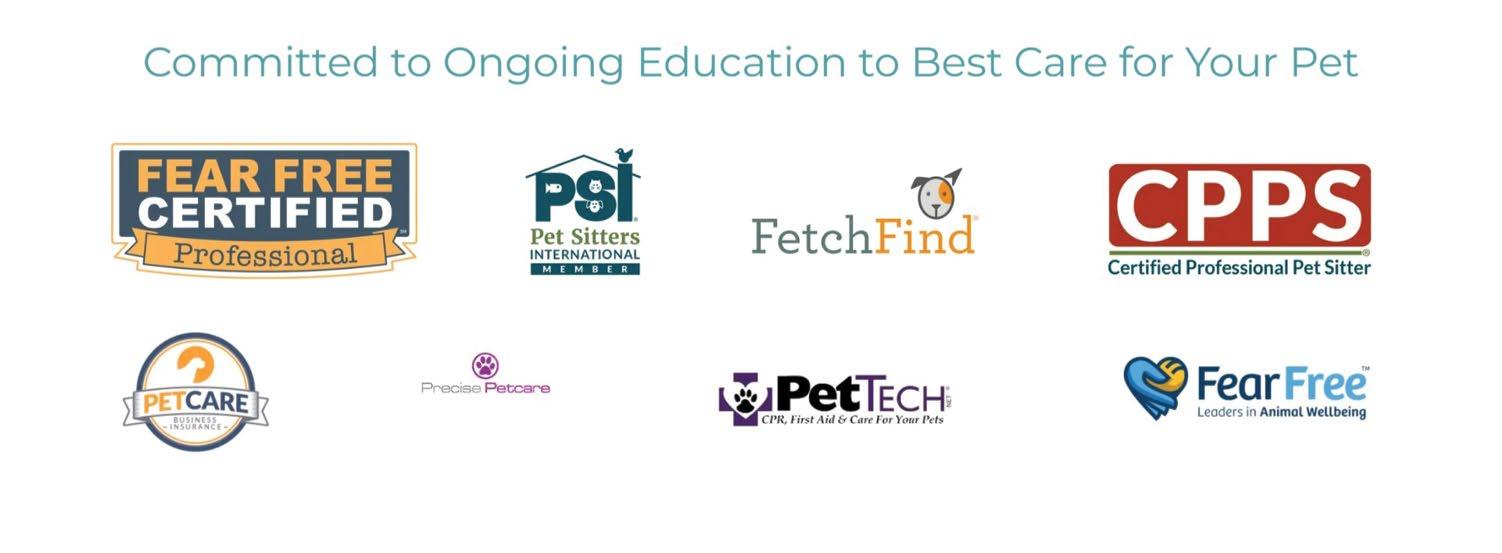
Your website’s “About” page. Another option (which can be in addition to including these icons in your website’s footer) is to detail your certifications, continuing education, and other credentials in the “About” section
of your website. Or you may even consider having a dedicated page on your website to highlight this information.
In the example below from PSI member Lindsey Perriello, owner of Lindsey’s Dog Walking & In-Home Visits, LLC, in Lower Burrell, PA, on the , she uses easy-to-read, short paragraphs in her About section to highlight her credentials. She includes the information here in addition to icons in her website’s footer.
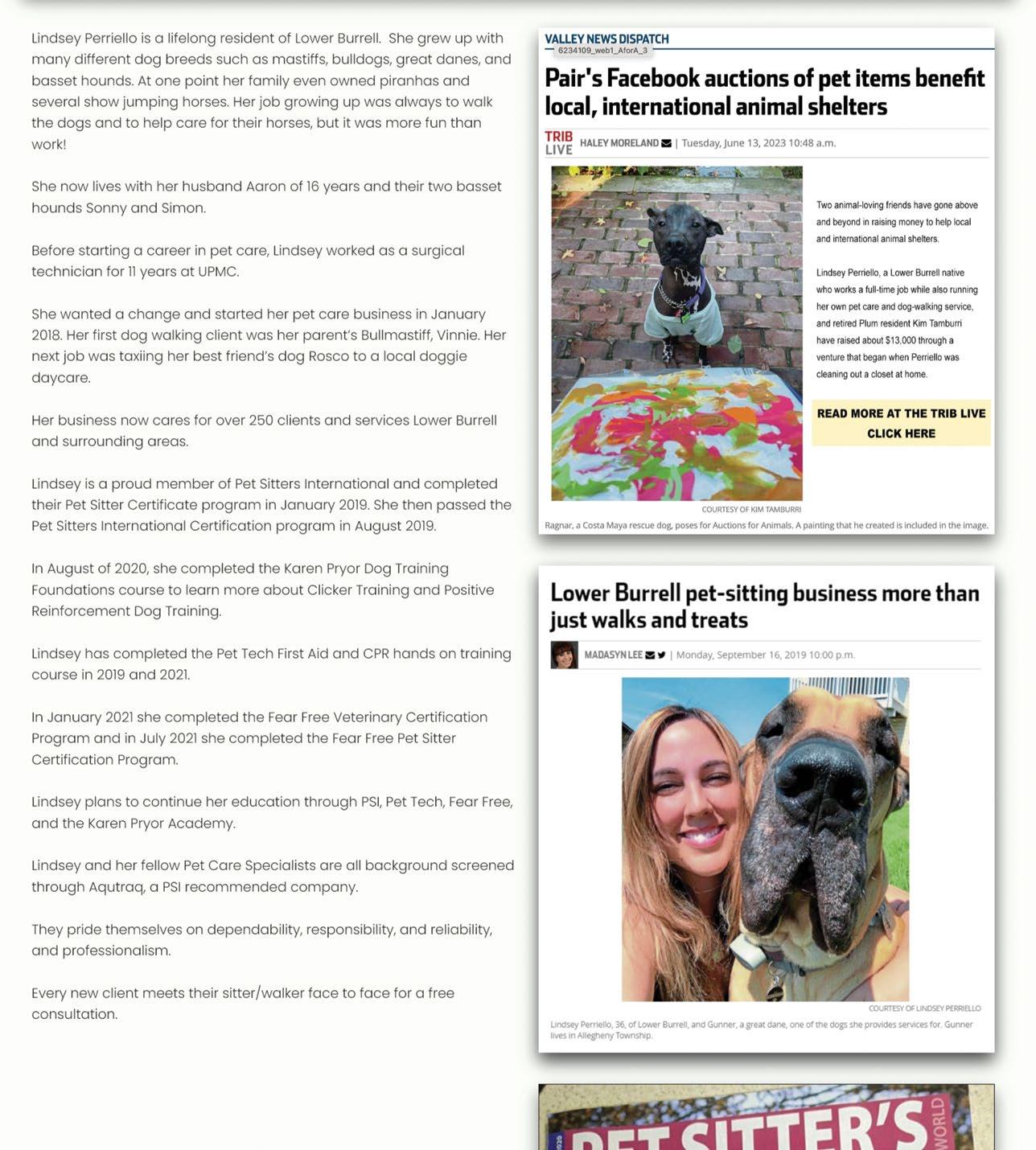
Bonus tip: It’s also a good idea to highlight your credentials (and professional affiliations) in your website’s footer. This way, the information is displayed on every page of your website, and can be seen by all site visitors, regardless of which page on your site they find first!
Whether your company is on Facebook, Instagram or other social-media channels, these platforms offer a quick, simple way to share your credentials and commitment to education. Plus, you can share this information in different formats—videos, photos, etc.—that you may not typically post on your website.
Consider these ideas:
Post a copy of your certificate of completion, certification logo, etc. This is an obvious— and easy—idea to implement. If you become a Certified Professional Pet Sitter, become Fear Free Certified, complete pet first aid training, etc., post your certificate of completion (or logo, if there’s one associated with a designation you’ve achieved) on your company’s socialmedia feed. This serves as a quick announcement of your most recent achievement and/or educational pursuit.
Make a behind-the-scenes video. If you or your staff are at a pet-sitter conference, taking a pet first aid class or other training, or even just watching a webinar/online training, share a quick video with your audience. Instagram and Facebook Stories offer an easy way to do this, but you could also use Facebook Live or post a video you record later. This is a fun way to show you or your team in action, while also highlighting that your business prioritizes continuing education.
Share your knowledge. Take your post a step further by sharing a specific skill or piece of information you’ve learned from a recent educational opportunity you’ve taken advantage of. For example, if you recently completed your pet first aid training, record and post a quick video demonstrating a specific skill you learned. If you are not comfortable recording a video, you can share a helpful tip or important statistic from your training with your audience (and be sure to indicate how you learned that information).
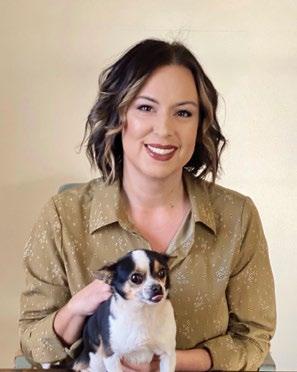
Beth Stultz-Hairston, PSI president, has worked in the pet industry for nearly two decades. She is the editor of Pet Sitter’s World magazine and authored The Professional Pet Sitter’s Startup Guide. Beth received her B.A., English, from the University of North Carolina at Chapel Hill, and has obtained certification as both a Compassion Fatigue Educator and Compassion Fatigue Therapist through the Green Cross Academy of Traumatology.
While it’s important to highlight your education and credentials on your website and social media, look for ways to incorporate this information in your business materials and communications as well. cation, etc.).
Some ideas to consider:
• Include your credentials on your business card (e.g., CPPS® logo, pet first aid logo, etc.).
• Include these credentials in the signature of all business emails (with a link to more information, if possible).
• List your credentials and educational experience in your online listings (e.g., Google listing, PSI Locator, etc.).
• Share a press release with local media about significant achievements (e.g., obtaining certifi-
Now, the big question: Will pet parents even care? This is a question we hear a lot: Will potential clients even care if I am a CPPS-Certified Professional Pet Sitter®, or a Fear Free Professional, or [any other credential you may obtain]?
Or, more often than not, it’s actually a statement we hear: Clients have never asked me about being a Certified Professional Pet Sitter, or Fear Free Professional, or [any other credential you may obtain].
Think about it this way, though—why would they? How would they even know to ask, or know how important the continuing education and specific credentials were?
That’s the mistake that many pet sitters and dog walkers make when it comes to highlighting their credentials.
Simply listing your credentials isn’t enough. You need to explain to clients what that means for them—and their pets.
Consumers of any product or service typically want this one question answered: What’s in it for me?
It’s your job to answer that question. So, while you understand the value of continuing education and credentials in the professional pet-care industry, you must effectively communicate that to pet parents.
Which options below do you think would be most effective?
• Only posting your CPPS® logo on your website OR sharing your CPPS logo (or certificate) with this messaging? ABC Pet Sitting owner Jane Smith has earned the CPPS-Certified Professional Pet Sitter designation. This federally trademarked certification mark can only be obtained by pet-care professionals who successfully demonstrate their knowledge and skills by passing the nation’s only knowledge-based assessment designed specifically for professional pet sitters. As a pet parent, you can have peace of mind that you are using the services of a pet-care professional who has been tested on the best pet care, pet health and business practices—and who has committed to practicing high industry ethics and pursuing continuing education.
• Sharing your certificate of completion for a pet first aid training OR sharing that certificate (or logo) along with a post that details the specific skills you were tested on or even possibly including a video of you demonstrating a specific pet first aid skill, along with the messaging that your clients can rest assured that you’ve taken the extra step to ensure you can respond quickly and correctly should a pet injury or emergency occur while their pet is in your care?
Here’s a great example from PSI member Lynnae Schooler, owner of Alaska Pet Nanny. You can read her complete post on Instagram where she explains what being a Certified Professional Pet Sitter really means and how

Remember, your credentials are commendable and your commitment to continuing education should be applauded, but unless you are promoting your experience to clients AND explaining how it improves the quality of care their pets receive, they won’t know.
Once you can explain what’s in it for them (and their pets), they’ll be impressed—and spread the word about the amazing pet sitter/dog walker they’ve found!
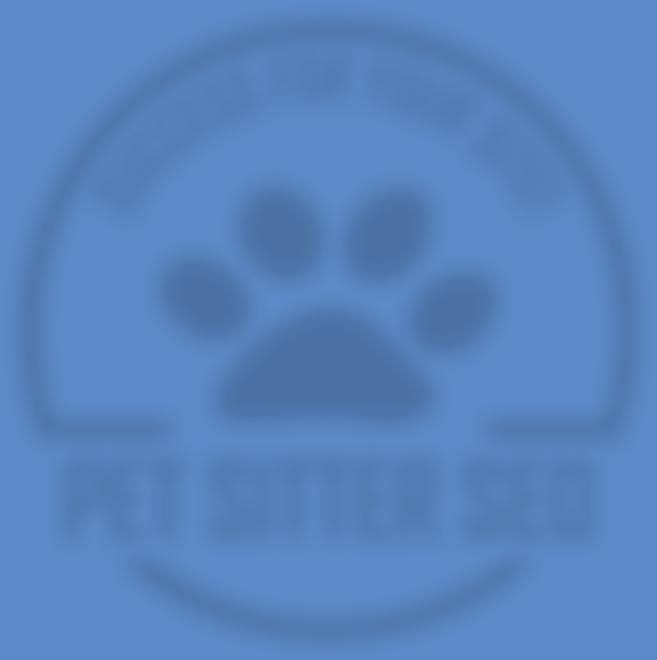


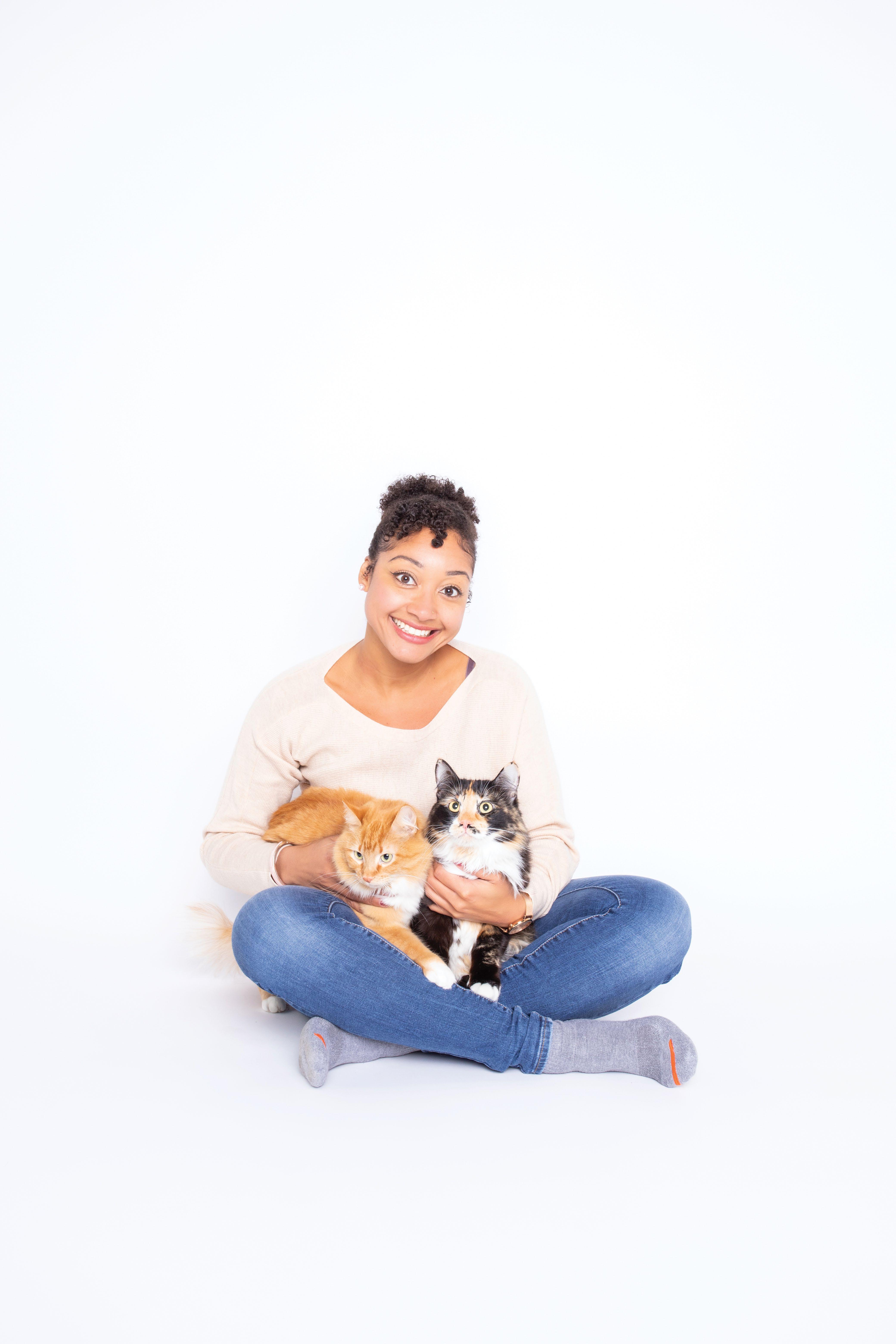
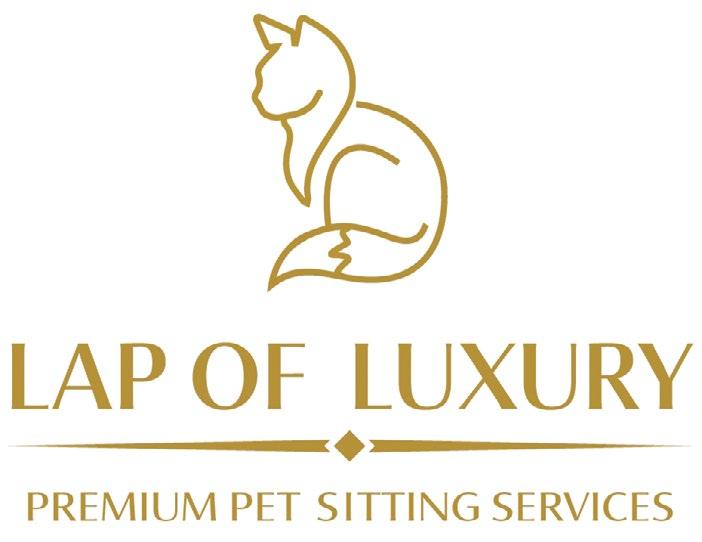
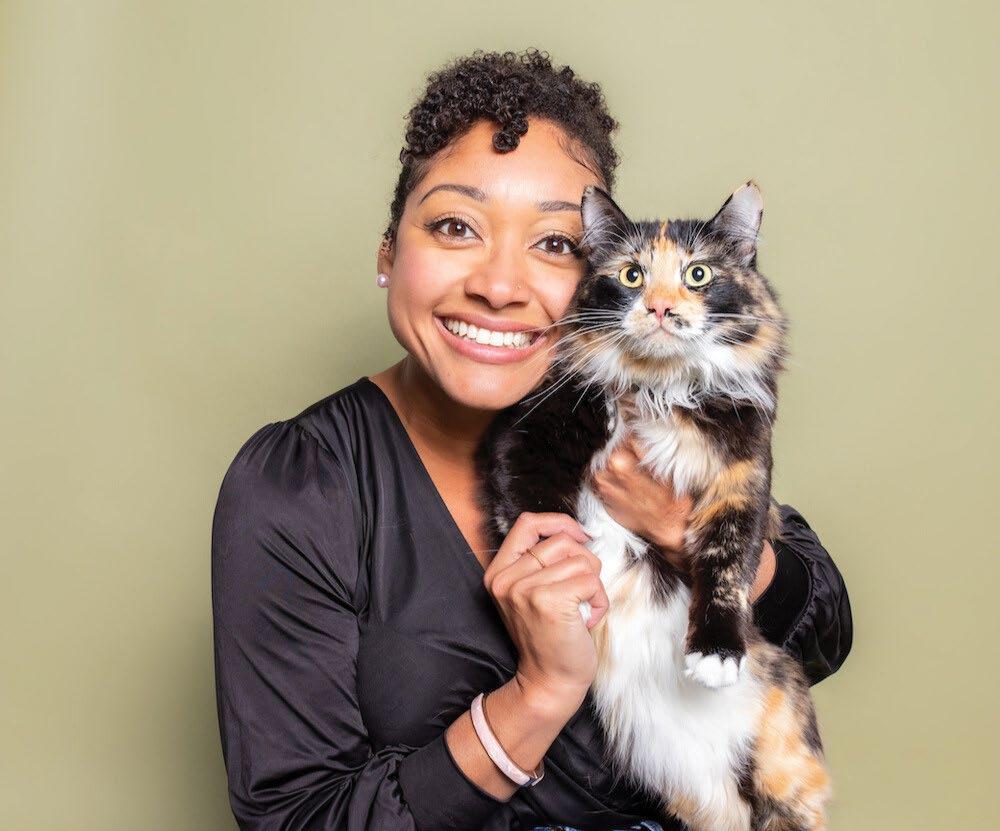
decided to name her business Lap of Luxury – Premium Pet Sitting Services, she drew on inspiration from her childhood to evoke that sense that pets are getting top-quality care, with love and compassion.
“I grew up with cats and then my mom, she would always say, when we were petting them and giving them so much love and giving them kisses … ‘Oh, they’re in the lap of luxury,’” Ashten recalls with a laugh. “And that kind of all just stuck with me.”
Now in her second year of business, Ashten is thriving and finding her ideal clientele in Edmonton, Alberta, Canada, as she earns new certifications, networks in her community, and stays on top of the latest marketing strategies.
A CPPS-Certified Professional Pet Sitter©, Ashten gushes when she talks about her own kitties—threeyear-old littermates Pippen and Axel, who were the inspiration for her business logo.


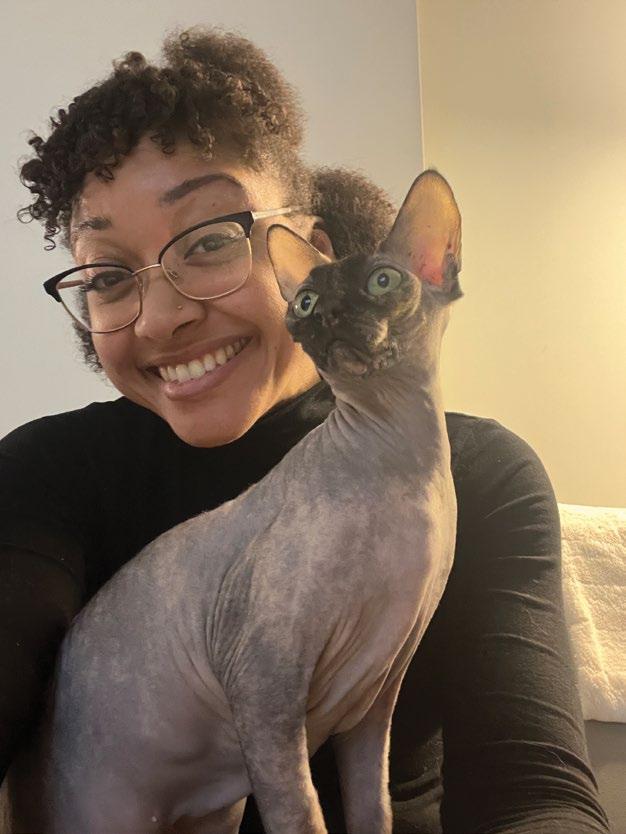
since she was five years old and has cared for friends and family members’ pets since she was a teenager, but she
had not thought of pursuing pet sitting as a career. In fact, she worked many different jobs and was in her mid-30s before she decided to start pet sitting professionally.
“I know it’s corny to say, but every time my clients come back from their holiday, and they tell me how much fun they had and were not worried about their fur babies brings me such joy,” Ashten says. “They appreciate the updates, care and love their pet received and when I receive this
career.”
Applying skills from various careers
With her experience attending both college and university and working in various careers, Ashten learned skills that have served her well as a pet-sitting business owner—primarily adaptability, as she learned to talk to a range of different people and find common ground.
As a legal administrator in downtown Toronto, she gained experience talking to a variety of professionals and figuring things out on her own.
As a research analyst for a center for addiction and mental health, she learned more about empathy and trying to humanize everyone.
Also a veteran, Ashten signed up for the military when she was 30 years old and was posted to Edmonton. While it was difficult to get into that mind frame and routine at first after working as a civilian for years, Ashten

valuable experience during her time as a military medic. Knowing how to administer medications has been especially helpful as a pet sitter.
“It’s just a lot of people skills, I think, and it’s helped me a lot,” Ashten says of her background, “even just having the confidence to go to meet and greets and not feel super nervous or awkward. And not that that’s a bad thing, but it just makes it obviously easier.”
While later working as an administrative assistant for a concrete company, Ashten decided to sign up for Rover, and after gaining a couple of clients she thought, “Wow, this is really fun.” People liked how Ashten communicated with them, and they complimented her care for the pets.
“So, I was like, okay, well, I’ve never actually tried to do this professionally, so maybe I should take it to the next level,” Ashten recalls.
Then she got laid off from her job at the concrete company, so she took it as a sign. She opened Pawsitive Energy Pet Care in November 2022, later changing the name to Lap of Luxury – Premium Pet Sitting Services in March 2023 “for a new look, a new professionalism.”
Tip for success: Ashten uses Time To Pet for her pet-sitting software and says being tech-friendly has helped her as a pet sitter—not being afraid to use technology and upgrade and learn new functions. “It helps to be, not tech savvy, but want to learn,” she says.

Patience has also served Ashten well, both in caring for pets and running a business.
“I’ve learned to have patience along this journey, and beforehand,” Ashten says.
Gaining the knowledge she needed It was difficult to get into the mindset of being an entrepreneur for the first time in her mid-30s after years of working 9-to-5, but Ashten has taken advantage of a variety of educational opportunities, including a course for new entrepreneurs offered by the province of Alberta. That nine-month course had a networking group and training on topics ranging from business plans to marketing.
She also networks with other pet sitters and pet professionals such as groomers and trainers, and she joined Pet Sitters International and earned her CPPS designation. She is also a Fear Free Certified Professional, completed pet first aid training, and has been talking with the Pet Nanny Coach.
“I want to get as much knowledge as I can to be known as a professional, and just for myself for confidence, because that’s a big part of it, too. … There’s always lots to do, and I guess I kind of like that. I’m a student forever,” she says.
She has found that education helps her with her greatest challenge, and one that many other pet-sitting business owners likely encounter: imposter syndrome.
Tip for success: Ashten says of imposter syndrome: “I mitigate this by surrounding myself with other pet professionals, even if it’s just reading posts in a Facebook group. Asking questions or advice from other pet sitters or pet pros I network with and keeping up to date with new information regarding pet care in general. Looking back at my accomplishments and celebrating them also helps to see how far I’ve come and that I am capable of running a successful business.”
Ashten advises new pet sitters that it may be hard starting out, “but at the end of the day the only person you need to believe in you, is you.”
Serving clients in a downtown area Ashten has lived in Edmonton for almost five years now. She was nervous at first, moving from a thriving hub like Toronto, but she says Edmonton has a lot to offer. There are diverse food options, music festivals in the summer, universities, and plenty of green space and trails, as the downtown is situated along a river. Another bonus: Edmonton is only a three- to four-hour drive from Banff and Jasper, celebrated for their mountain views.
Lap of Luxury’s service area is focused on Edmonton’s downtown core, and if a client is outside that radius, they pay travel fees.
“I want to stay the downtown core,” Ashten says, “just because some clients have come to me and they’re like, ‘Oh people don’t like to come downtown’ … But I live downtown, so it’s no issue for me, so I’m like, yeah, let’s cater to these people.”
She doesn’t take pets off-leash downtown, but fortunately the ample green space means there is always somewhere nice to walk. She does drive to assignments since the city’s buses and street cars are a slower mode of travel.
Ashten has about 40 clients and primarily services cats and dogs, though she has also taken care of ferrets, guinea pigs and fish. She offers pet sitting and dog walking services, as well as overnights, 24-hour care, and daycare.
“It’s kind of more where it’s customizable, it’s personalized,” she explains, “and I’m there for the client, whatever they need. It’s not like a set schedule that they pick A, B or C. Everything can be optimized to their greatest benefit.”
She also offers pet taxi services, pet supply pickup, and light household cleaning. She’ll pick up packages and drop off mail—offering something a little extra to make her clients’ lives simpler.
“If I’m there, you don’t need to hire somebody else,” she says.
Providing exceptional cat care With two beloved cats of her own, Ashten thinks about how hard it is to leave pets, and she tries to embody what she would look for in a pet sitter.
“The be all, end all, no need to worry,” she says. “They’re professional, they have these certifications…and then they have these services to add on to it in case I need them.”
While she loves dogs, too, she has a soft spot for cats, with their distinct
personalities and their independence. She says they are “like little princesses, they’re royalty.”
“If they show affection, I just feel so loved,” she says with a laugh.
Most of her clients are cats, and she strives to treat them as her own.
Tip for success: Ashten says if it is her first time going to a home, she ignores the cats. She has cared for some territorial cats who were fine at the meet and greet but started hissing and growling during her first visit. “Obviously I have to take care of myself and like, what’s safe for me,” Ashten says, “but I feel like if I just ignore them and go on my way, do the chores, just, don’t look at them too much…I feel like they warm up to me.”
Ashten recalls an overnight visit with a cat who hissed at her the whole time. She was in bed when suddenly the cat climbed up on the bed and hissed over her face. Somehow Ashten stayed still and calm, and she and the cat are now friends.
“So, I feel like just staying calm [is important],” Ashten says, “but obviously if you don’t feel safe, then you need to tell the parent. They just need time, I feel, especially cats.”
the business
Ashten has used a variety of marketing methods to get her business off the ground. She went on a “veterinary tour”—dropping off business cards and treats and introducing herself to vets—and she networks with other pet sitters who give each other referrals.
She has also found success with Google ads and used the slower spring months to work on a Google digital marketing course. She uses the Wix platform for her website, which she says is a lifesaver, since it provides analytics.
Tip for success: When asked to share business tips with other pet sitters, Ashten says getting Certified is one of the top things that her clients comment on.
“Getting first aid especially, any kind of behavior training, but also even the CPPS. It just takes it to that next level, when you say I’m Certified professional and here’s why, and then I talk about PSI to them as well,” Ashten says, highlighting the constant learning and how she takes the career seriously. It also helps clients justify paying higher prices.
Currently a solo sitter, Ashten hopes to start hiring in the next year, but even as she grows, she is mindful not to overbook. For example, last year she went on a week’s vacation with her boyfriend in November, ahead of the busy Christmas season.
Very aware of the potential for burnout, Ashten practices meditation and yoga daily to keep things in perspective, as well as exercise if she is not doing a lot of dog walking. She also talks to other entrepreneurs and has some other friends who are starting businesses, so they vent and bounce ideas off each other.
She shares another key to avoiding burnout: paying yourself properly.
If you’re not paying yourself what you’re worth, then you can experience burnout, Ashten says, because you are having to do so many visits to make a livable wage. If professionals price at a higher rate, “we can all benefit,” she says.
“We just have to make sure and pay ourselves what we need,” Ashten says. “The right clients will find us.”
And the right clients are indeed finding her—those who want luxurious care for their pets.

As you see in the State of the Industry Survey summary included in this issue, 52% of PSI members who use staff sitters indicated they use employees, compared to 43% in the 2022 survey and 32% in the 2020 survey.
If your business reaches a point where staff sitters are needed, you will need to determine if you will use ICs or employees. To determine which option is best for you, you’ll need to give thought to your business’ financial and strategic plans— and even more importantly, you need to understand the laws.
We anticipate the percentage of PSI member pet-sitting businesses with staff who use employees (and not ICs) will continue to increase—and for good reason. Federal and local guidelines make it nearly impossible in many areas for pet-sitting businesses to use ICs legally.
For U.S. pet sitters, the Internal Revenue Service (IRS) explains that when determining if a person should be classified as an employee or IC, the degree of control and independence must be considered. Additional details can be found by searching the IRS website.
Another great resource is your local office of the Small Business Administration (SBA). To find your local office, you can visit SBA’s website at www.sba.gov.
Local regulations may be more stringent than federal regulations. More than half of the U.S. states use the ABC test for determining IC status. The “B” portion of this test—which indicates that the person must perform work that is outside the usual course of the hiring company’s business—all but eliminates the option for pet-sitting businesses to hire contractors to perform pet sits or dog walks.
Canadian pet sitters can visit the Employment and Social Development Canada website at www.esdc.gc.ca The Wagepoint Blog also offers a great mini guide that outlines the differences between using employees and ICs in Canada.
When making staffing decisions, do your research! Claiming to not know/understand the laws will not protect you from consequences if you are audited. Plus, as a professional you have an ethical responsibility to operate your business legally! —PSI Staff


Editor’s Note: This article was first published in this magzine in 2022. With nearly 70% of PSI members offering care for birds, we thought this was an important article to reshare.

More than five million households share their life with a pet bird, and hundreds of species exist, each with its own personality, traits, and characteristics. Therefore, there likely is a pet bird that will fit each of your bird-loving clients’ homes and lifestyles, but strongly encourage clients to do their research before adopting.
Many choose feathered friends over other pets for the following reasons:
1. Low Maintenance: Birds do not need to be walked like dogs and require minimal grooming.
2. Inexpensive to Feed: Most birds require a high-quality pellet diet. A three-month supply typically costs under $20 plus greens purchased at your grocery store. Some birds, however, do eat meat and eggs.
3. Inexpensive to Care for: According to the American Pet Products Association, typical annual cost for owning a bird is $185 barring emergencies. This is typically for food, toys, treats and annual veterinary check-ups.
4. Small Living Quarters: Dogs and cats need space to roam, but birds can live in smaller spaces if their cage is twice the width of their wing-span and large enough for them to fly from perch to perch.
5. Birds are Social and Trainable: Birds love to learn which makes them fun to be around. They are entertaining and thrive on interaction with you.
As the caretaker of a pet bird, it is best to learn about the species you will be looking after, but regardless of the species, you must become a bird health detective for your feathered friend’s sake!
As with other pets in your care, getting to know the individual bird can help you notice changes he is not likely to make known.
Signs and symptoms of a sick bird include:
• Feather picking; rough, tattered, or missing feathers
• Sitting on the cage floor, especially if feathers are puffed up
• Unusual vocalizing; more or less than is normal
• Changes in eating and drinking habits, diarrhea, or straining
• Skin is not plump; you can feel the pointy breastbone
• Sneezing, eye, or nasal discharge
Checking vital signs helps you focus on what is normal and what is not. Listen or feel for your bird’s heartbeat. Using a stethoscope, place the diaphragm (smallest disc) on the sternum (breastbone). The characteristic “lub-dub” you are familiar with in humans, canines, and felines is so fast in our feathered friends that it sounds like a “whirr.” Vitals also vary drastically from rest to agitation or when flying as well as according to a bird’s size. A parrot in flight may have a heart rate as fast as 1,000 beat per second! That would be impossible to count but you should have a sense as to what that feels and looks like on the bird.
Respirations are determined by the rise and fall of the chest as inhalations and exhalations occur.
Small Pet Birds (Canaries)
Large Pet Birds (Parrots)
400 – 800 beats per minute
30 – 60 breaths per minute
140 – 200 beats per minute 10 – 30 breaths per minute
On average, a bird’s body temperature should be 105° F. Depending on the species though, the range can be 102° F – 109° F. Most bird owners do not monitor their bird’s body temperature as it requires careful practice to place a lubricated thermometer in the cloacae (the cavity through which droppings and eggs pass). Instead, they keep a thermometer on the cage to make sure the environmental temperature is comfortable. According to Dr. Gregory Burkett, a North Carolina-based avian veterinarian, “Most pet birds’ comfort range is ping below 40° F or rising above 90° F can prove harmful to most species.
If a bird is losing weight and is not on a diet, this is a cause for concern, so an avian veterinary visit is neces sary. Weighing birds monthly, on a gram scale, can quickly alert you to a problem.
Just as you would do a head-to-tail checkup of your four-legged friends, look your feathered ones over taking note of lumps, bumps, feather loss or lack of luster, discharge, or any thing not right. As a prey species, birds try hard to hide signs of illness, and sick birds may perk up and
appear normal in sight of human companionship. Getting acquainted with each bird’s unique body by feeling gently from his crown (head) down his neck, over the keel (breastbone), abdomen and down the tail feathers to his toes, can help you spot a problem early.
As you continue over the crest (feathers on top of crown), notice if the plumage appears full and healthy with vibrant color. Do you see discharge from the eyes, ears, or nares (nostrils)? If the nares are obstructed by mucus or seeds, wipe them ever so gently. Take a moment to find the bird’s special spot behind the ears where he would adore a little rub and make it a fun bonding experience for you both!
Feel down the sternum, noticing if your bird is breathing easily—no open-mouth labored breaths or tail-bobbing (abnormal motion of tail feathers during respiration). Gently with your thumb, feel if the skin is plump (well-hydrated) and notice if it easily glides over the keel. If it does not, the bird is dehydrated!
Birds are meticulous creatures so if they stop grooming, they may be sick. Look closely at the feathers. An unkempt appearance as well as feathers that remain fluffed for an extended period could tell you it is time to seek professional medical help.
Look for “pasty waste” (diarrhea residue) under the tail feathers and check droppings for normal appearance. Color and consistency may vary depending on diet. Munching greens may give feces a greenish hue, making them soft. Watery, green, black, or tarry stools could be a sign of disease or malnutrition. If the bird is a seed eater, you will find firmer, drier fecal droppings while a surplus of

Critically evaluating the type and number of droppings can help you catch a problem at onset, while cleaning the cage floor DAILY allows you to inspect for potential signs of illness such as blood or unusual droppings. A thorough cage cleaning is recommended weekly, but a daily tidy is your best defense.
Once you turn the birdy loose, make sure he can balance on his perch and is bearing weight evenly on all toes. Tune in to his song. Most birds produce a wide array of sounds, so if a bird in your care is suddenly silent, he could be singing a song of
Share this info with your bird-loving clients so they will hopefully leave a ur care.
• An insured pet sitter, suffering from a brain on leave, accidentally watered a client’s fake poinsettia plant. The water leaked through the pot, causing major damage to the client’s new credenza. Total Paid $5,713.
• A dog in the sitter’s care bit a pedestrian on the leg while on a walk. Total Paid $92,307.
• A sitter was taking care of multiple clients’ dogs at her home. A few of the dogs got into a fight, resulting in one dog limping. Total Paid $580.
• A cat in a pet sitter’s care suffered from hematuria and was taken to the vet. Total Paid $1,581.
• A dog walker took the client’s dog for a hike on a wooded trail, and while running through the trees, the dog suffered a laceration to their stomach/side. Total Paid $1,010.
• While in the pet sitter’s care, the client’s dog got out of the gate and ran away. The dog was found two days letter, and unfortunately had been hit by a car and suffered multiple bodily injuries. Total Paid $6,412.
• A pet sitter tripped and broke part of a custom-made stained-glass window at the client’s home. Total Paid $654.
• While on a walk, a client’s dog slipped out of their leash and bit another dog that was in the park. Total Paid $1,024.
• During playtime with other dogs at a pet sitters’ home, one of the dogs suffered a toe fracture. Total Paid $941.
• A cat was given too much insulin by the pet sitter which resulted in a drop in the cat’s blood sugar. Total Paid $2,600.
• An employee was bitten by a cat on the left thigh. Total Paid $291.
• While leaving a client’s home, a pet sitter’s employee fell and injured her right ankle. Total Paid $742.
• A client’s dog bit a pet-sitting employee’s finger during a visit. The wound became infected, and the employee required a follow-up visit to clean and heal correctly. Total Paid $3,148.



David Pearsall is the vice president of Business Insurers of the Carolinas (BIC) in Chapel Hill, North Carolina, which provides the Pet Sitters Liability Protection Policy and other insurance products to PSI members in the U.S. Visit www.psi-ins.com to learn more or contact BIC by phone at 1-800-962-4611.
Whether you’ve been in the industry for a few months or many years, if you are pet sitting for dogs or offer dog-walking services in your business, you are likely to have either been bitten by a dog or come across a friend, a relative, a client, or a client’s dog that has. Over the years, I have written on this topic many times, but when the most recent statistics were released earlier this year by State Farm and the Insurance Information Institute, I felt compelled to do so again.
As a risk manager specializing in insurance for pet-service providers for many years, I can say without a doubt that dog bite claims, and all that comes along with them, are by far some of the worst experiences a pet-services professional will ever encounter. For this article, let’s review the newest statistics, compare them to data for PSI members over the same period of time, discuss what to expect if you incur one, and last but not least, discuss how to avoid them.
The good news, well, there really isn’t much when it comes to the following statistics, other than to say the actual number of bite claims has continued to stay about the same each year, ranging from as low as 14,295 in 2005 to as many as 19,062 in 2023—but staying consistent in the five previous years, around 17,500+/-.
The bad news…the cost! Since 2003 claim costs for dog bite incidents have soared by 237%, and for the last two consecutive years, the total value of these claims has exceeded $1 billion dollars (just over $1.11 billion in 2023, and $1.13 billion in 2022)—compared to $324 million in 2003. In addition, according to the Insurance Information Institute’s latest release, the average cost of a dog-bite claim was $19,162 back in 2003, but
has increased to $58,545 in 2023, which dropped from $66,555 in 2022 (the largest on record over the last 20 years).
As you might imagine, the claims costs for pet sitters and dog walkers over the same time frame have also increased significantly, and typically have even higher payouts due to the fact that most are due to negligence on behalf of a professional pet-care provider. Since we can only publish information on closed claims (and not claims currently still open or in the court systems), the following results are as of year-end 2020. Back in 2003, the average bite related claim was approximately $18,597, and in 2020 that average had increased to $69,453. A 374% increase, and keep in mind that is just the average.
Here are just a few examples of very large bite claims paid out in recent years:
• While walking a client’s dog, the dog walker stopped to look in a shop window as people were passing by on sidewalk. The dog was spooked and bit someone approaching from behind. Total paid $379,012.
• A dog in a pet sitter’s care slipped out of the harness and chased after a smaller dog being walked by the owner. The owner went to pick up her dog and was bitten. Total Paid $405,701.
• A pet sitter was entering the home of a new client. Upon opening the front door, the dog ran past the sitter and attacked a passerby on the sidewalk across the street. Total Paid $550,812.
Now let’s look at how these large dog bites and bodily injury claims typically oc-
(continued)
cur, and what you can do to avoid one from occurring to your business.
In reviewing our closed claims files from 2003-2023, the majority of dog bites and dog related bodily injury claims appear to occur in one of these different scenarios.
Scenario #1: When a dog in a walker’s care attacks or is attacked by another dog, and the dog owner or another third-party attempts to intervene and break up a fight.
A good example of this is the paid claim above where the dog slipped from its harness and attempted to attack a smaller dog. Here are a couple more:
• While walking a client’s dog, the sitter came upon another person walking their dog in the opposite direction. The client’s dog pulled the leash from the sitter’s hand and proceeded to attack the other dog. The dog owner attempted to break up the fight and was bitten multiple times on the hands, arm, and leg. Total Paid $203,966.
• While walking a large dog, the walker encountered an elderly gentleman walking his dog. The walker could not restrain the larger dog, and it attacked. When the man picked up his dog to save them from an attack, he suffered multiple bites. Total Paid $95,714.
Scenario #2: When a pet sitter/dog walker allows someone to pet the client’s dog in their care.
Here are a couple of examples:
• While a pet sitter was walking a client’s dog in the parking lot of an apartment complex, a mother and daughter approached and asked if it was okay to pet the dog. The sitter obliged, and as the little girl approached, the dog snapped and bit her in the face. Total Paid $48,828.
• A pet sitter was walking a small terrier mix in a gated community.
A woman approached, who appeared to know the dog (as it was the client’s neighbor), but when the woman bent down to pet the dog, the dog bit her in the nose. Total Paid $47,051.
Scenario #3: When a pet sitter/dog walker has a dog off leash, either playing with them in a public place or caring for them at their home.
Examples are as follows:
• The pet sitter, who also performed in-home boarding/daycare, was taking care of a client’s two dogs at their home when a delivery person arrived and began walking up the walkway. One of the client’s dogs immediately ran up and bit the delivery person on the leg. Total paid $64,639.
• While the pet sitter was on a hike with their client’s dog, it suddenly took off running. As the sitter was calling for the dog to come back, another hiker on the trail attempted to secure the client’s dog for the sitter, but the dog was spooked and bit him multiple times. Total Paid: $130,058.
Scenario #4: When a dog walker is walking dog(s) on a busy street, and a dog in their care bites a walker, jogger, bicyclist, etc. passing by.
We have many similar examples over the years, but here are just a couple:
• A pet sitter was walking a client’s dog when a jogger approached from behind and spooked the dog. Startled, the dog immediately lunged and snapped at the jogger, biting him on his leg. Total Paid $66,096.
• A dog walker was walking a client’s dog on a busy street in the city with many others passing along their route. As a person attempted to pass them quickly, coming up from behind, the dog snapped and attacked the person, biting them multiple times on the ankle. Total Paid $112,441.
These dog bites, also known as bodily injury claims, continue to occur and as evidenced from all the above, continue to increase each and every year by double digits. To avoid these types of incidents, please be sure you and your team members always pay attention to your surroundings while on walks/ hikes with clients' dogs.
Know who is coming and going, both from the front and from behind. Always be aware of other people in the area, whether they have a dog or another pet with them or not. No matter how sweet the client’s dog(s) might be, be sure to be alert for people approaching from the opposite direction or coming up from behind, including if they are walking, jogging, riding a bike or scooter, etc.
Always take into consideration the size of the client’s dog and the size/strength of you or your assigned walker. If you or your team member(s) are unable to control a client’s large dog on a walk or not confident in your ability to contain him or her, it is best you pass on the job or recommend another sitter.
If walking or playing with your client’s dogs off leash, in public areas or on hiking trails, etc., please try to do so at a time of day when the park or trail(s) are less populated to avoid potential unforeseen exposures that come with more people and pets present. Regardless of how sweet a dog seems or whether a client tells you “my dog would never bite anyone,” never allow anyone to pet the client’s dog(s) while out in public or even a delivery person showing up while you’re at the client’s home.
And as always, if you have team members, employees, your spouse or significant other, and anyone working in your business, even temporary or one-time substitute, be sure they are made aware of all the above. The best dog bite claim is the one that never occurs, and some of the worst are featured above.
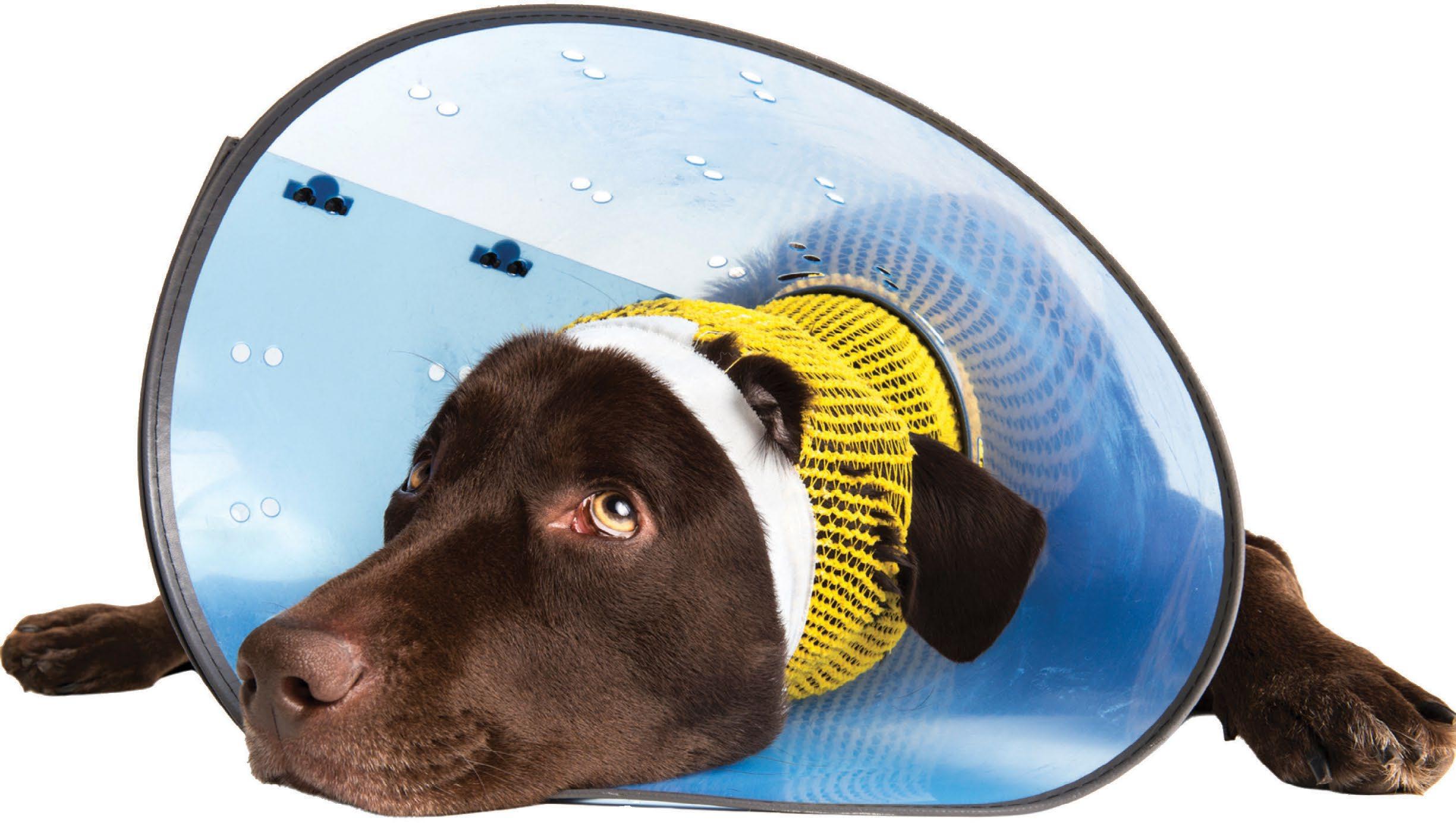

As a professional pet sitter, it would be surprising if you did not spend a lot of time petting or cuddling cats in your care. If you are trained in cat first aid, you would pay particular attention to how they normally feel and act, because you know if something is out of the norm, something may not be quite right with your furry charge. To that point, have you ever stroked kitty cat ears and found them to be warmer than usual or downright hot?
Cat ears are super interesting. Each ear can rotate independently a full 180° allowing kitty to zero in on the direction of even the quietest sound. Each ear has 32 muscles that rotate the pinnae (ear flaps) in the precise direction from which the robin is chirping, or from which the electric can opener is playing its enticing melody. Cat ears also are mood barometers that provide cues to how the cat is feeling. A stressed or upset cat will flatten her ears against her head while ears facing forward typically mean you have a happy kitty in your presence. An increase in temperature of the ears, however, may signal that your cat has a fever or infection, or may be suffering from heatstroke.
Cats are warm-blooded animals with an average body temperature of 101°F or 38.33°C, but their ears are quite thin with little fur and body fat. When the environmental temperature rises, blood vessels in the cat’s ears widen allowing more blood to flow through, lowering their blood pressure (vasodilation). When the environmental temperature drops, vasoconstriction (narrowing of the vessels and slowing or blocking blood flow) occurs to conserve body heat.
Therefore, vasodilation will occur in a kitty sunning herself on a windowsill while vasoconstriction is likely if kitty is left out at night. If you care for a Siamese or other “colorpoint breed,” notice the darkest patches of fur are at the coolest parts of the body: the ears, nose and tail, areas of reduced circulation.
“The only way to tell the difference between normally warm ears and hot ears is to check the cat’s temperature with a thermometer as the degree of ear hotness is not a good
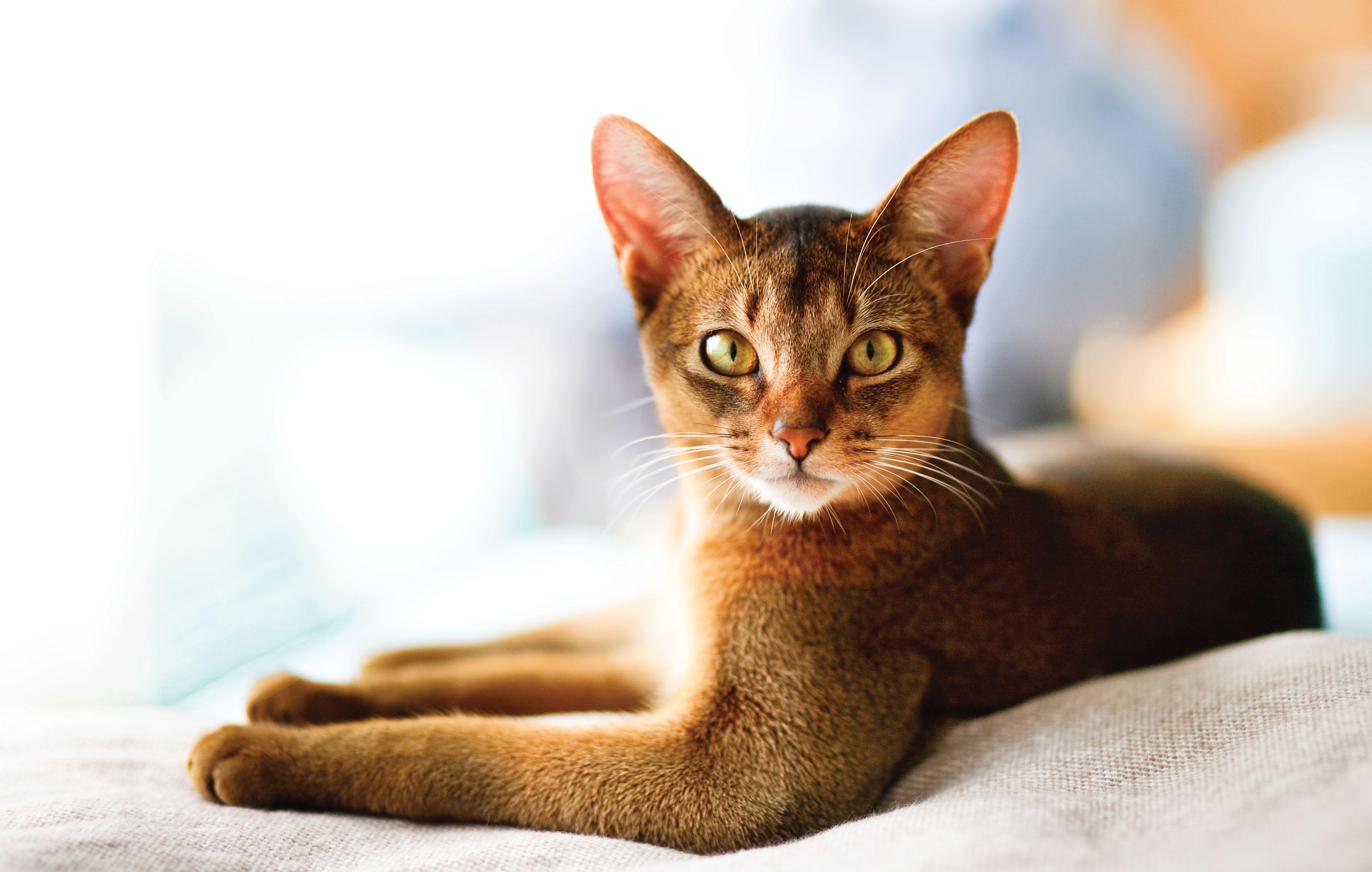
indicator of body temperature since cats use their ears to cool themselves down,” explains Liz Koskenmaki, DVM, Burbank, California. “The blood flow within the pinnae is closest to the skin which allows for cooling, so if the ears feel hot the cat may just be regulating her temperature.”
Allergies can affect skin and ears which could make a cat’s ears feel hot to the touch. Food, pollen, mold, fleas, and dust mites are a few allergens that could cause this to occur. If a cat’s ears are hot due to an allergic reaction, you may observe small red bumps or scabs on the skin, but it is possible for allergies to affect just the ears with no skin rash present. Of course, if the ears are hot in conjunction with facial swelling or any difficulty breathing, the cat may be experiencing a severe and life-threatening allergic reaction (anaphylaxis), possibly caused by a bee sting, and needs immediate veterinary care.
Hot ears may be a sign of illness in a cat. Fever is the body’s way of fighting infection, so if a cat in your care has a fever, they will likely find a cool place to lay with her body splayed, typically a tile floor. If you are a student of cat first aid, you’ll recognize this as an example of conduction where the cat uses a cool surface to transfer the heat from her body and lower their body temperature.
“There are many causes of fever in cats,” explains Dr. Liz. “Most commonly some type of infection, but other causes include heat stroke, ingestion of certain toxins, or other inflammatory processes in the body. Increased body temperature can cause inappetence (loss of appetite), lethargy, and abnormal behavior, so it is critical to have a veterinarian examine

any cat with a fever to diagnose the problem and treat it accordingly.”
Vomiting and/or diarrhea may accompany an infection of the stomach or intestines, but sneezing with nasal and eye discharge is more common with cat flu. If, however, the cat has an abscess, likely from an infected bite caused by another cat, you’ll see swelling, redness and possibly a limp. Fever can also be present without outward appearing signs, so only your veterinarian knows for sure.
Heatstroke
Heatstroke is a life-threatening emergency resulting from a cat’s body temperature increasing, usually due to the environment, like when a cat is accidentally locked in a shed, garage, or other confined space. Although felines
are more tolerant of heat than their canine counterparts, if a cat in your care shows signs of heatstroke (e.g., panting or open-mouth breathing, bright red or purple gums), start cooling them from the paws up to the belly skin with room temperature water before they collapse and contact a veterinarian at once.
Cats can get an infection of the outer ear which results in inflammation, making ears feel much warmer than usual. Additionally, a kitty may scratch or rub their ears or shake their head to try to alleviate the discomfort. This can raise body temperature, making their ears feel hot.
Excessive wax build-up reduces ventilation which increases temperature, including that of the ear flaps. One thing leads to another, and the warmth creates a perfect environment for both ear mites and yeast to flourish. Mites cause intense itching, leading to the cat scratching their ears relentlessly. Wounds from scratching, dark discharge or a pungent odor require veterinary care without delay! Excess hair, dirt, or other debris in the ear can lead to bacterial or yeast infections as well. Even a foreign object inside a kitty’s ear can kick their immune system into high gear attempting to fight off the infection, which could result in their ears feeling hotter than normal.
When To Call the Vet If a cat you care for has warmer than normal ears but is otherwise acting normal without signs of injury or illness, take their temperature like Dr. Liz suggested or take them straight to the veterinarian for peace of mind.
If the cat’s ears feel warm and they are exhibiting signs of illness (e.g., vomiting, diarrhea, difficulty breathing, loss of appetite or lethargy), contact your veterinarian at once.
There are a few non-medical reasons why a cat could have unusually warm ears. If a kitty loves to sunbathe in a window or lays by the radiator, their ears may feel warm but should not continue to do so once they move to a cooler space. Also, if your hands are cold, kitty’s ears might feel cool to the touch when they are actually normal. Paying attention to your feline friends and properly reacting when something is not quite right can make you a cat’s hero.


Denise Fleck is the Pet Safety Crusader™, having taught 31,000 humans animal life-saving skills. Her mission is to help YOU make a difference in the life of an animal through her pet first-aid, senior pet care and disaster preparedness classes. Denise has appeared on television, radio and in magazines, and has authored more than a dozen books. She is the proud recipient of multiple awards from both the Cat and the Dog Writers Associations, including the PSI Professional Pet Care Award Learn more at www.PetSafetyCrusader.com
Presented by Tori Mistick, Wear Wag Repeat

Presented by Olivia M. Gonzalez, OMG Brand Story, LLC

Thank you to Business Insurers of the Carolinas, sponsor of this year’s free member webinar series.

www.psi-ins.com
Presented by Amy Toman, Pet Sitter SEO

Presented by Bobbi Wilson, Peace Love Paws Pet Sitters, LLC

To register for upcoming webinars, visit petsit.com/psi-webinars.
Presented

Webinars are free to members, but pre-registration is required. All member webinars are recorded for on-demand viewing, and the on-demand recordings of PSI’s webinars include closed-captioning and/or transcripts.
Certified members can earn up to 2 CEUs per webinar (whether you watch live or view the recordings).
It’s often difficult for pet sitters to take off their caregiver hats and become marketers, but if you want to retain full control of your business, an understanding of basic marketing principles is a requirement. It’s to the benefit of your business to also know basic SEO strategies, which help you to gain online visibility and drive client leads. The “hub and spoke” method of website organization is an essential strategy, and very effective.
What are hub pages?
I’ve spoken about hub pages quite frequently. These pages introduce a topic, then link out to other pages on the same website (also known as “spoke” pages) that discuss that topic more fully. I’ve sometimes referred to these pages as portals because they’re like doorways to more detailed information. Hub pages use internal links to guide users (and search engines) to other more detailed pages, giving them more visibility with the hope they’ll show up in search results on their own.
What are the best hub pages for pet sitters?
The best pages to use for this strategy are Services and Service Area
How do hub pages benefit a website?
These pages help in several ways. The most important is that they make the site easier to navigate, for both humans and search engines. By placing these two pages in the main navigation bar, users immediately understand where to go to find the information they need. By making that path easy for clients, your site will benefit because you’ve shortened the path for them to become clients. They won’t be wasting time or clicks to get the info they need. Remember, the easier it is to make a decision, the more likely someone is to decide in your favor.
Hub pages also help with site organization. When designing websites, most developers and SEOs recommend limiting the number of links in a main navigation bar to seven. When you have other valuable pages to offer, hub pages function almost like categories, appearing in the main navigation bar, with related services or service area pages contained in dropdown menus below them. So instead of mentioning every single page in the navigation bar, you mention the five primary headers, then organize everything else below those, like this:

Services and Service Area are two pages that I recommend every pet sitter have on their website. These are vital for providing information the search engines want and, more importantly, the information potential clients need, to understand your business and its offerings. They serve as central hubs for more detailed information and often provide the only details on smaller niche services.
When initially designing your website, Services and Service Area should be added without hesitation. They need to be there; they provide basic information anyone seeking your services will seek out. Similar to when you buy your first house, when you get your first website, you buy what you can afford, and then build onto it. In this case, you create Service and Service Area pages, then add supplementary pages (spoke pages) as your business develops.
Another value of hub pages is as a platform that shows how expert you are in defined topics. Services and Service Areas show that you’re an expert in the services you offer, and in your geographic areas.
Another benefit of hub pages is that by providing additional, more detailed information on standalone pages, you increase your value to Google. This is done by providing them with more information that will help them understand that you have an extensive knowledge of your topic. Google’s goal is to present search results that best answer a search query, and if your site provides the best information, or more than others provide, they are more likely to promote those pages in their search
results. They need businesses to prove they are experts so they (Google) can include them in high quality search results.
How do you optimize hub pages?
The goal of a hub page is not to obtain strong visibility for itself, but to serve as a platform for other more specific pages. So, while your Services and Service Area pages should have good SEO and content, their purpose is primarily to only introduce topics and compel users to click through to other pages.
Animal Admiration’s Services page is a good example of a well-structured hub page. They have each of their services mentioned, described in text, illustrated by a good photo, and then they feature a link to a specific topic page if there is one. The Services page describes just enough of each service to get users interested, then links to a page that more fully describes it. If they don’t have a separate page for the service, they add the good content but leave out the link.
you’ve created additional pages, add links to each place mentioned. Maps are good on these hub pages to show the overall area, and photos of locally-recognizable sites (meaning sculptures, buildings, geographic elements like beaches or mountains) help the page stand out and be recognized for their knowledge of the area.
This hub page can provide a bit of specific information about each area, but I find it more helpful to provide general information about the area, add a few graphics, then link to the specific location page. These also benefit greatly from the outgoing links to the pages.

https://animaladmiration.com/services/
As mentioned, all of their services are listed on the page, so the hub page provides a good deal of information on its own; it’s the individual pages they link to, though, that get the most attention from Google, and hopefully appear in search result pages.
If you have just a Services page on your website, that’s fine and helpful, but adding a page for each of your services is better.
Service Area hub page optimization should be similar. The content should mention the general area, then listing the specific locations you’ll service, even if you don’t have separate pages for each one. When
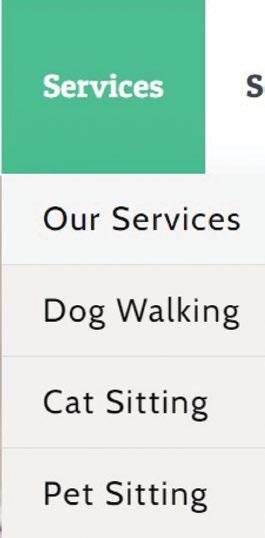
As with Services pages, having the one Service Area page is great, but having a page for each of your service areas is better. These can be towns, neighborhoods, gated communities, college campuses, or other areas, as long as the place names you mention are recognized and used by those in your area.
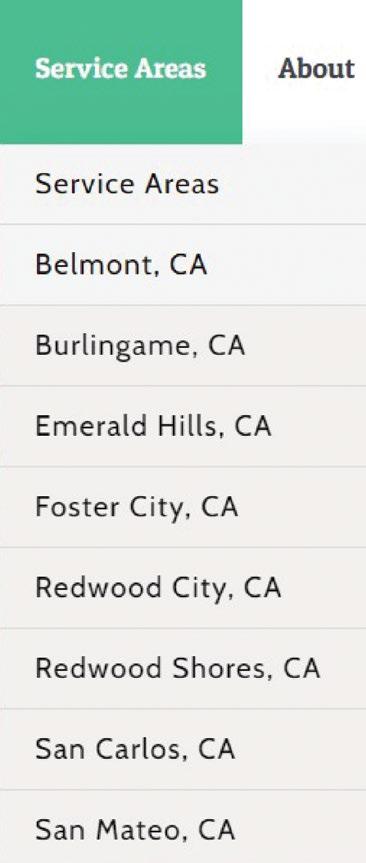
Hub pages, which are considered part of the “hub and spoke” SEO strategy, are great additions to pet business websites. By appearing on well-organized navigation bars, they provide a great category-like folder where content is organized for easy navigation. By adding submenus to these pages, you present a website that is not only professional in appearance, but easy to navigate and full of information. They’re a must for all pet care business websites

Amy Toman is a professional SEO and Platinum Google Product Expert. She has been working with pet sitters since 2015 and started her own digital marketing agency in 2017. She maintains an active Facebook presence and welcomes questions from business owners of all levels of technical expertise. Learn more about Amy’s services at petsitterseo.com




Below is a list of pet-related observances you can highlight on your company’s social media pages this quarter. Plus, you can view the yearlong list on the PSI website at petsit.com/2024-pet-holidays.
Lost Pet Prevention Month
National Pet Hydration Awareness Month
• July 1: ID Your Pet Day
• July 10: National Kitten Day
• July 11: All-American Pet Photo Day
• July 15: I Love Horses Day; National Pet Fire Safety Day
• July 16: World Snake Day

• July 18: Get to Know Your Customers Day
• July 21: National Craft for Your Local Shelters Day
• July 26: National Dog Photography Day
• July 30: International Day of Friendship
• July 31: National Mutt Day
National Immunization Awareness Month
National Wellness Month
• August 1: DOGust Universal Birthday for Shelter Dogs
• August 4-10: International Assistance Dog Week
• August 5: Work Like a Dog Day
• August 6: Fresh Breath Day
• August 8: International Cat Day; Global Cat Day®
• August 10: Spoil Your Dog Day
• August 14: World Lizard Day
• August 15: Check the Chip Day
• August 17: National Black Cat Appreciation Day; International Homeless Animals’ Day®
• August 22: National Take Your Cat to the Vet Day
• August 23: International Blind Dog Day
• August 26: National Dog Day
• August 28: Rainbow Bridge Remembrance Day
PSI’s Pet-Sitter Education Month™
Responsible Dog Ownership Month
CATalyst Council’s Happy Cat Month
National Preparedness Month
Animal Pain Awareness Month
National Service Dog Month
National Pet Health Insurance Month
• September 1: Ginger Cat Appreciation Day
• September 8: National Iguana Awareness Day; National Pet Memorial Day; National Hug Your Hound Day; National Dog Walker Appreciation Day
• September 13: Pet Birth Defect Awareness Day
• September 16-22: Adopt-A-LessAdoptable-Pet Week
• September 17: National Pet Bird Day
• September 21: Puppy Mill Awareness Day; Responsible Dog Ownership Day
• September 22-28: National Dog Week; Deaf Pet Awareness Week
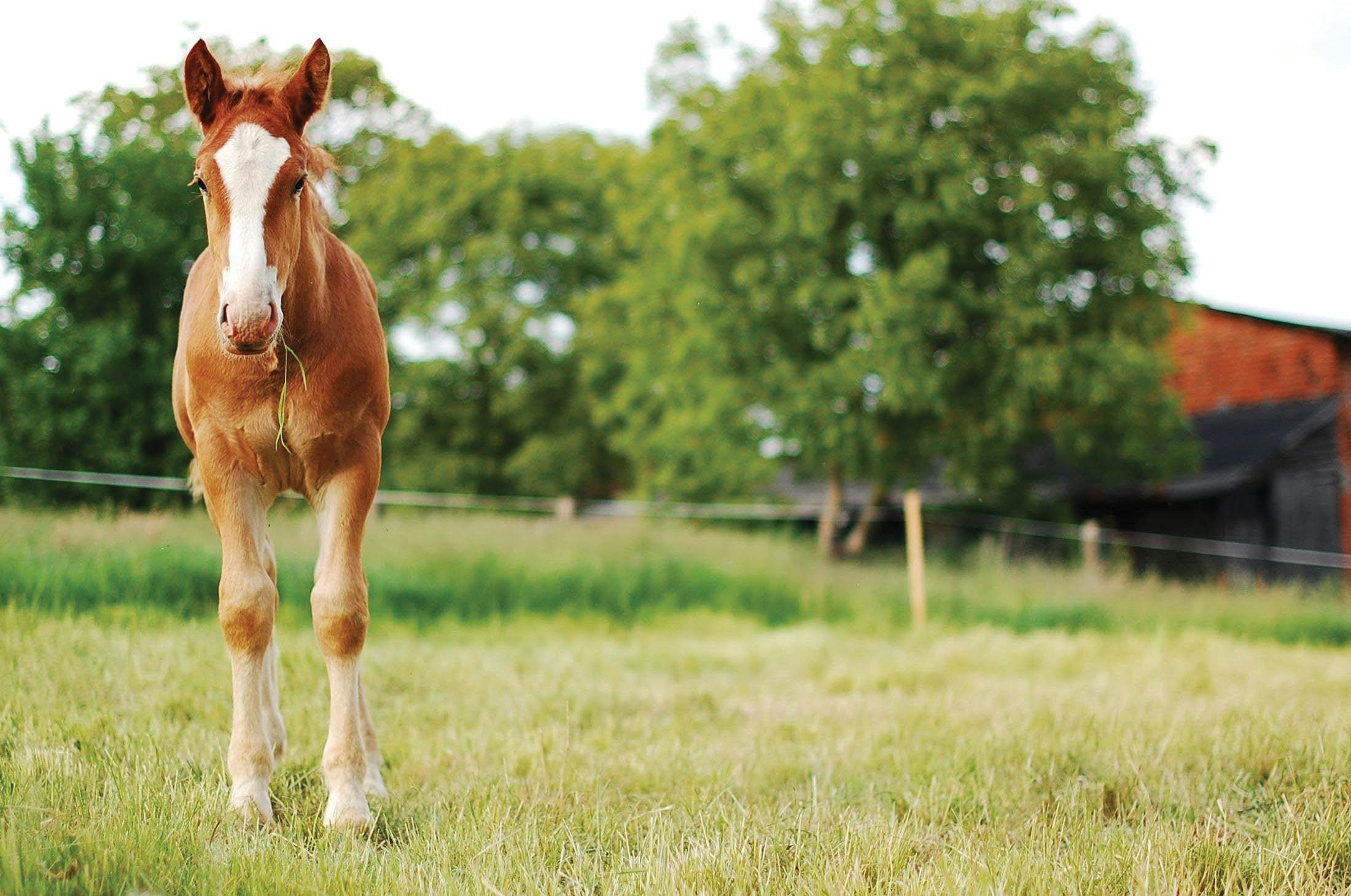
• September 26: Remember Me Thursday®

• August 30: National Holistic Pet Day
Don’t forget that PSI also includes free social-media images for members to Monthly
Most pet-sitting entrepreneurs don’t start expanding their staff until after they have spread themselves so thin that burnout is looming. Besides not really knowing where to start with staff expansion or having the time to interview and train, another obstacle to growth is our valued clients. They are the clients who say, “Oh, we don’t want anyone but you caring for our pets.” They really make us believe that no one else can fill our shoes when it comes to caring for their beloved family members.
Though it might be tough, step out of your emotional you and into the rational you. What did they do for pet care before you? And if they hold you in such high esteem, won’t they trust your judgment in the selection of someone to step in for you? Of course they will! You have already educated them on the merits of in-home pet care. You are in an excellent position to convince them to give your staff pet sitter a chance to carry on the first-class service and reputation you’ve established.
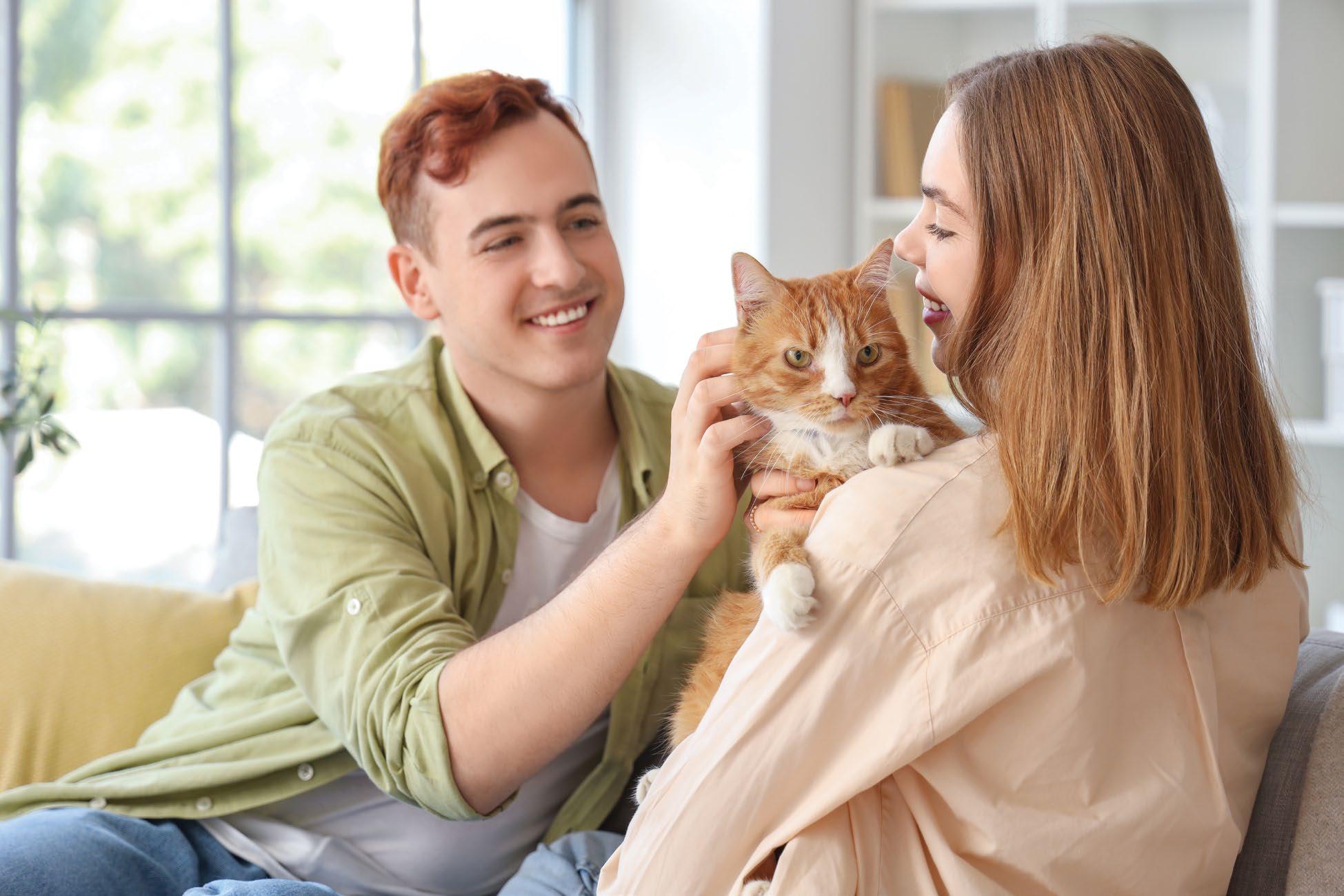
first notice. We recommend a personal letter introducing the new staffer. You may choose to send this by email, snail mail or leave behind the printed announcement when you pet sit.
It always helps to introduce change gradually. Springing a new pet sitter on pet owners without some notice could be unnerving. When you start planning to add staff, start discussing it with your clients. They might give you the opportunity to address objections long before you are in the process of training. Mention that you are conducting a search for a trustworthy helper. They might offer good leads. Explain that when you identify just the right person, you will properly introduce them. Use these discussions to reassure your clients that you are taking all the right steps to ensure that the person you choose is worthy of their trust.
Some pet sitters choose to maintain their current clients and use staff sitters for new clients—but explain to current clients that they do have staff sitters as an emergency backup should they be unable to complete an assignment. Others choose to use staff sitters for current clients as well but may offer existing clients a consultation with the new staff sitter prior to the next assignment.
You will want to announce your new staff member through all your communication vehicles, such as your website staff listings, blogs, Facebook, Instagram, newsletters, etc. Your loyal clients deserve the courtesy of them receiving
Please note that you will need a signed release from your employees before sharing their information on any public platform. A sample release form is shared in the Templates folder that accompanies PSI’s Hiring Guide for Pet Sitters & Dog Walkers course.
The great thing about sending messages by letter is that you have a truly captive audience. It’s the perfect opportunity to reassure, express gratitude and talk about success. Everyone is comforted by knowing they are doing business with a successful company.
Brevity is a virtue, but your letter should cover the following components:
• An enthusiastic announcement of your new business growth
• A proclamation of your personal commitment
• A staff expansion notice
• A brief and appropriate bio of the new staff member
• A statement of assurance
• A note of thanks for loyalty and patronage
• A restatement of your commitment to excellent pet care
After you’re sure your letters have arrived at the homes of your clients, turn your sights to cyberspace. Pictures always get more attention than just text on social networking sites. With the staffer’s permission, post a photo and announcement on your Facebook page and Instagram account. Professional announcements are common on LinkedIn too. Use whatever social media venues you have to leverage the news.
On social media sites, your posting should center around welcoming the newcomer, as well as highlighting their attributes. You might even consider posting announcements on sites that you follow where interaction is encouraged. Some community and civic pages allow open sharing. For others you can sometimes message the administrator and ask to post your announcement. When in doubt about the protocol of a group or page, it’s best to ask permission.
Having a staff page on your company website is a great way to inform clients and potential clients about your team members—and why they are assets to your team. Staff pages often include a high-quality photo of the staff sitter (with a pet if possible), the staff sitter’s first name and then a brief bio. In the staff bio, be sure to highlight their pet-care experience and any relevant training or credentials. Many staff bios also include information about the staff sitters’ personal pets and why they are passionate about pet sitting. Again, be sure your employee has signed your release form before publishing their information.
Issuing press releases for individual hiring is probably not as common as it used to be because there are so many immediate ways of sending information out online. However, if the business column of your local newspaper actively posts announcements, it is worthwhile to create one. Press releases might also be sent to large employers, local networking groups, and related entities, such as dog parks. It is certainly newsworthy if you are expanding other facets of the business concurrently.
For example, news that you are adding new services released at the same time as a hiring spree might get the attention of a reporter or facility manager. If you decide to issue a press release, there is a standard format for the document, and it should contain certain pertinent contact information.
There’s nothing like face-to-face introductions. In these times, there is a heightened awareness of crime propensity in our society. Most homeowners are very concerned about who is entering their most private space. We recommend that whenever possible, you introduce your new employees to the regular clients they will be serving.
Even if you can’t go with them, a pre-assignment visit by the sitter to the home puts a face with a name and increases trust. It can also give the client a chance to see the sitter interact with their pet, which can ease any reservations they might have about accepting someone new.
—Excerpted from PSI’s Hiring Guide for Pet Sitters & Dog Walkers online course & downloadable guide


If you are looking to create (and fill) an admin/managerial role on your team, follow these steps to make sure you create the right position and fill it with the right team member.
Nurturing talent in your business starts with hiring. Defining your hiring profile will determine if the people you are bringing into your business are going to be the type of people that you would want to train into higher level positions in your business. Target people who are going to be flexible and interested in serving the business as a whole, and who want to grow with the business. Defining your core values will also help in narrowing down the people you are looking for.
Step 2: Build a culture where you know your staff and their interests.
It is important as you are building your team that you stay connected to your team members. One of the best ways to nurture talent is to know your team and know their motivations. This does not have to be anything formal—just take the time to connect and to know more about them and what they want in a career (and this can answer many of these questions). This will be helpful as you are considering the needs of the business and the resources on your team, and where you might want to build out a future position. Knowing who this opportunity might fit with on your team can be helpful.
Step 3: Pay attention to natural strengths on your team.
Each of your team members will bring unique and individual strengths to the makeup of your team. As these strengths rise to the surface, keep an eye on how these strengths may be applied in a future admin or manager role. As you are building positions, you will want to be putting people in place who not only want to advance in the company but would genuinely excel in the role.
Step 4: Lead through questions.
Your team members will feel deeply cared for if you take the time to ask them questions about what they want out of their job, and if their current role is meeting it. Owners are oftentimes afraid to ask these questions because of the answers (such as somebody telling you they don’t actually like their job that much), but this actually is a critical piece to team members liking their job and to building trust with you.
Step 5: Define the position.
New positions for the business are often very undefined. And while you want team members who are okay to roll with the flexibility, you will also want to take time on the front end to define out everything you know about the position at this point in time. There is a lot you don’t know yet, but you’ll want to make as much as possible clear on the front end.
Step 6: Offer a step for opportunity.
Depending on the role and the person, start with a phone call: “I’ve been considering a new role for the business, and I think it would really align with your specific strengths. Would you be interested in discussing further?” And then take them to coffee to share more of the job. If it’s a current position, message them directly to let them know there will be an opening, and to encourage them to consider it. The key is to make sure the door is open to discussing their concerns or interest, and that you make sure they know this is optional. They do not have to advance if they do not want to.
Step 7: Require them to take action in order to get the opportunity.
If it is a defined position, such as the team lead or trainer, post an application to the entire team, and encourage the person you are interested in to apply. This is important for two reasons: 1) it gives them “buy in” on their commitment (they had to take a formal step, rather than everything just being handed to them), and 2) it shows you if there is somebody on your team that wants to be considered that hasn’t been on your radar.

Michelle Kline the founder of DogCo Launch, where she helps other companies grow and scale their pet care businesses. Until the recent sale, Michelle was the owner of Venture Dog Walking, a daily dog walking company in Winston-Salem, NC, that Michelle tripled in size after transitioning from full-service pet care to daily dog walking during the pandemic.



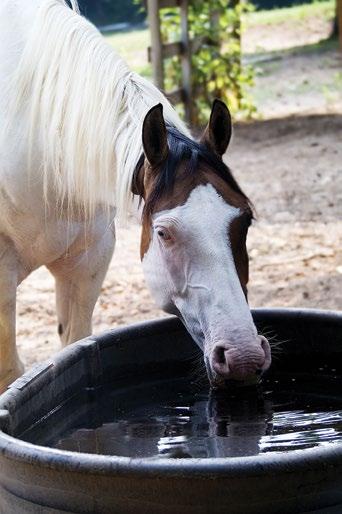


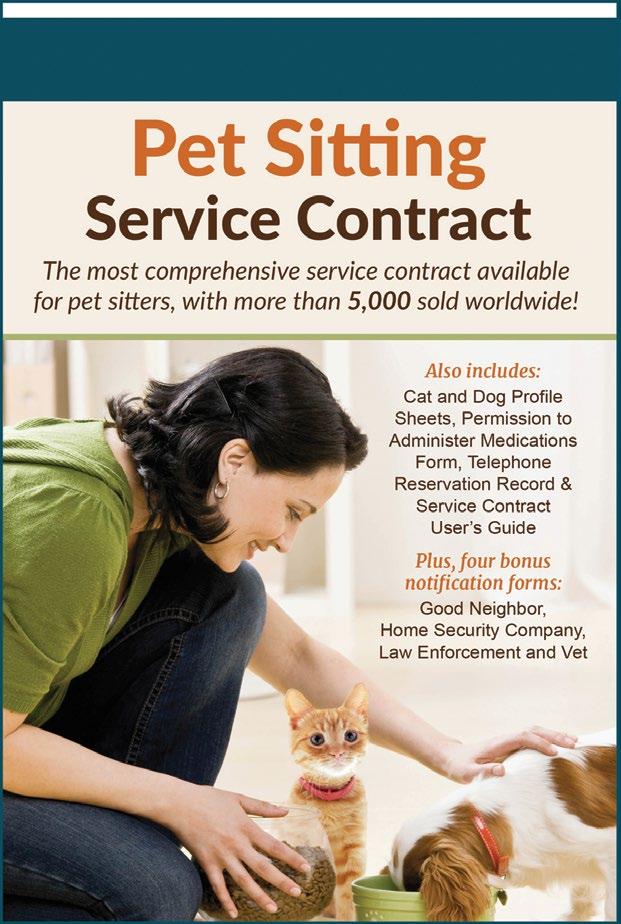
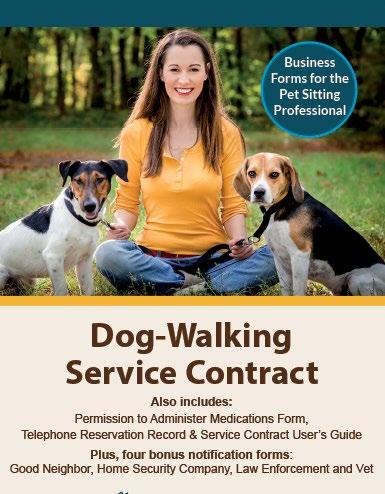

In PSI’s 2024 State of the Industry Survey, 55 percent of members indicated they offer services for reptiles and amphibians, including lizards, snakes, and turtles. This is down slightly from the 59% of members who indicated they offered reptile and amphibian care in the 2022 survey.
While the majority of members report caring for reptiles and amphibians, discussions about these pet types are rare in PSI’s member Facebook group—and we rarely hear from members sharing their experiences caring for these pets.
World Snake Day is observed on July 16, and it’s a good time to learn (or refresh your knowledge) on some basic safety tips if you are offering (or plan to offer) pet-sitting services for clients with snakes.
Pet Advocacy Network ( ing the snakes in your care healthy:
Good hygiene, care and handling will help prevent ill ness in the pets in your care and reduce the chance of a snake transmitting disease to humans.
Along with providing the proper diet, temperature, and humidity, follow these steps to maintain a snake’s health.
• Spot clean the enclosure daily and remove droppings.
• Weekly maintenance should include thoroughly cleaning the branches and rocks, turning the substrate, removing any large clumps, and wiping down the glass.
PSI’s motto is “pet-sitting excellence through education,” and we understand that

• Snakes should be handled with care and adult supervision.
• Sudden movements may startle a snake causing it to strike defensively, which may result in serious injury. It is always important to wash your hands with an anti-bacterial soap after handling your snake.
• All bowls, dishes, and bottles should be cleaned daily and disinfected weekly.
You can visit their website to download their Snake Care Sheet and to access care sheets for a variety of other pet types.
When caring for snakes, take steps to ensure you stay healthy as well. The CDC advises that you wash your hands with soap and running water after touching reptiles or amphibians, after feeding them/handling their food, after cleaning their tank or equipment, and before eating or drinking. To avoid scratches and bites, the CDC also recommends not kissing or holding reptiles or amphibians close to your face, feeding them with tongs (no handfeeding), and making sure they see you before picking them up (to prevent from surprising them, causing them to bite out of fear). —PSI Staff

The resources available to members at petsit.com/DEI explore a variety of issues related to diversity and equitable treatment in workplaces and small businesses.
On this same page you can also view PSI’s Non-Discrimination and Anti-Harassment Policies. We encourage members to adopt and actively implement similar policies in their pet-care businesses.
Pet sitters need to let their community know they are a business with a membership in a professional organization. If you want to stand out as a professional pet sitter, start by building a pet-centric network within your community that focuses on yourself and your credentials, with Pet Sitters International to back your credibility.
Businesspeople relate to an international organization like PSI, because many businesses are also members of organizations. One mistaken concept I hear from pet sitters is they need to stay within the pet community to network. Nothing could be further from the truth. Businesspeople are savvy in networking and promoting fellow businesses. Word of mouth from other businesspeople is an excellent source of referrals.
In growing your pet-centric based business, meeting with other businesses will give you leverage in the professional world.
What follows are just a few ideas to encourage you to promote yourself as a PSI-member professional business owner.
Business marketing groups: Starting your own marketing group is easy, or you can join a group that already exists. These groups are usually free to attend or just a matter of paying for your own meal. The best thing about most marketing groups is they are in a casual atmosphere, can be held during the off hours of the day/evening and are meant for smaller attendance.
1 Million Cups: These meetings are held in several cities. You will have

to check to see if you have a group in your area. This is a free Wednes day morning meet ing, full of busi nesspeople who want to help other businesspeople. You can present your business, pitch ideas to the group, and get answers and connect with other business leaders. The group does not require weekly attendance, but the more you participate the better your chances for marketing. The best thing about 1 Million Cups is you will get to meet the new and upcoming businesses in your community first, you can attend as much or a little as you like, and they have excellent local complimentary coffee!
Chamber of Commerce: If you participate and take advantage of all resources available, you get tons of exposure for your business. Once you pay your dues, you choose how much time and money you want to put into your membership. In most cases, you pay for every event beyond your paid membership dues. You will be listed on their website as a member for public viewing. The best things about a Chamber of Commerce are that you can join individual groups, you will meet a wide variety of people, and you can participate in the Chamber’s special events.
Business Network International (BNI): BNI groups are costly in both time and money. They are meant to leverage your business within the group through required meeting attendance, one–on-one meetings,
and referral leads. This type of group is meant to grow your business fast and consistently. The best thing about BNI groups is you will be the only one representing your specific profession within the group, keeping your business at the top of the referral list. You also get to present your business weekly, thus developing business relationships quickly.
Start building your network by educating on how important it is to hire a professional pet sitter who is a member of an international organization. When asked what makes you different from all the other pet sitters, respond…Being a Pet Sitters International member!
I welcome you to continue to join me in the next issue of Pet Sitter’s World magazine to learn how to utilize all things PSI. Be sure to watch PSI’s free August webinar where I will show you how to grow pet-centric by engaging your pet parents.
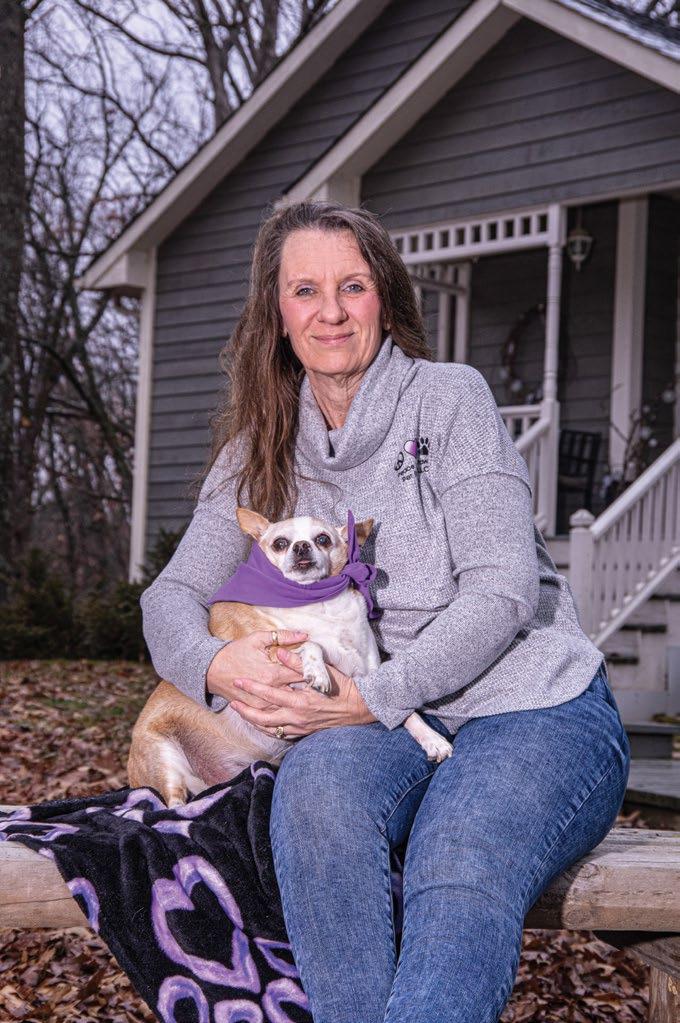
Year. Learn more at peacelovepawspetsitters.com.
Taking advantage of continuing education helps you ...
Become more confident.
As you continue your education, you will become more prepared to handle any pet-sitting situation you may encounter.
Gain a competitive advantage.
Pet owners are looking for knowledgeable pet-care providers, and your education helps you stand out from the crowd.

Boost business and revenues.
Continuing education can help you run your business more efficiently and effectively, attract new clients and positively impact your bottom-line revenues.
Provide the best possible care. You owe it to your clients and the pets they entrust to your care to stay up-to-date on the best pet-care and business practices. They’re counting on you!
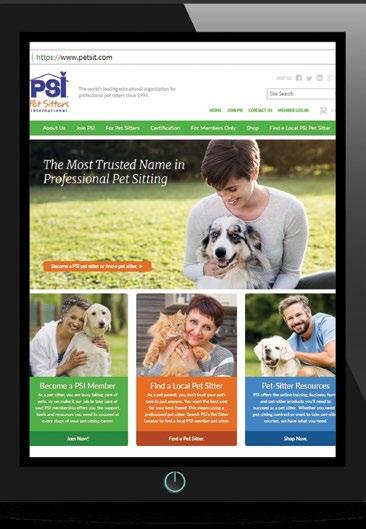

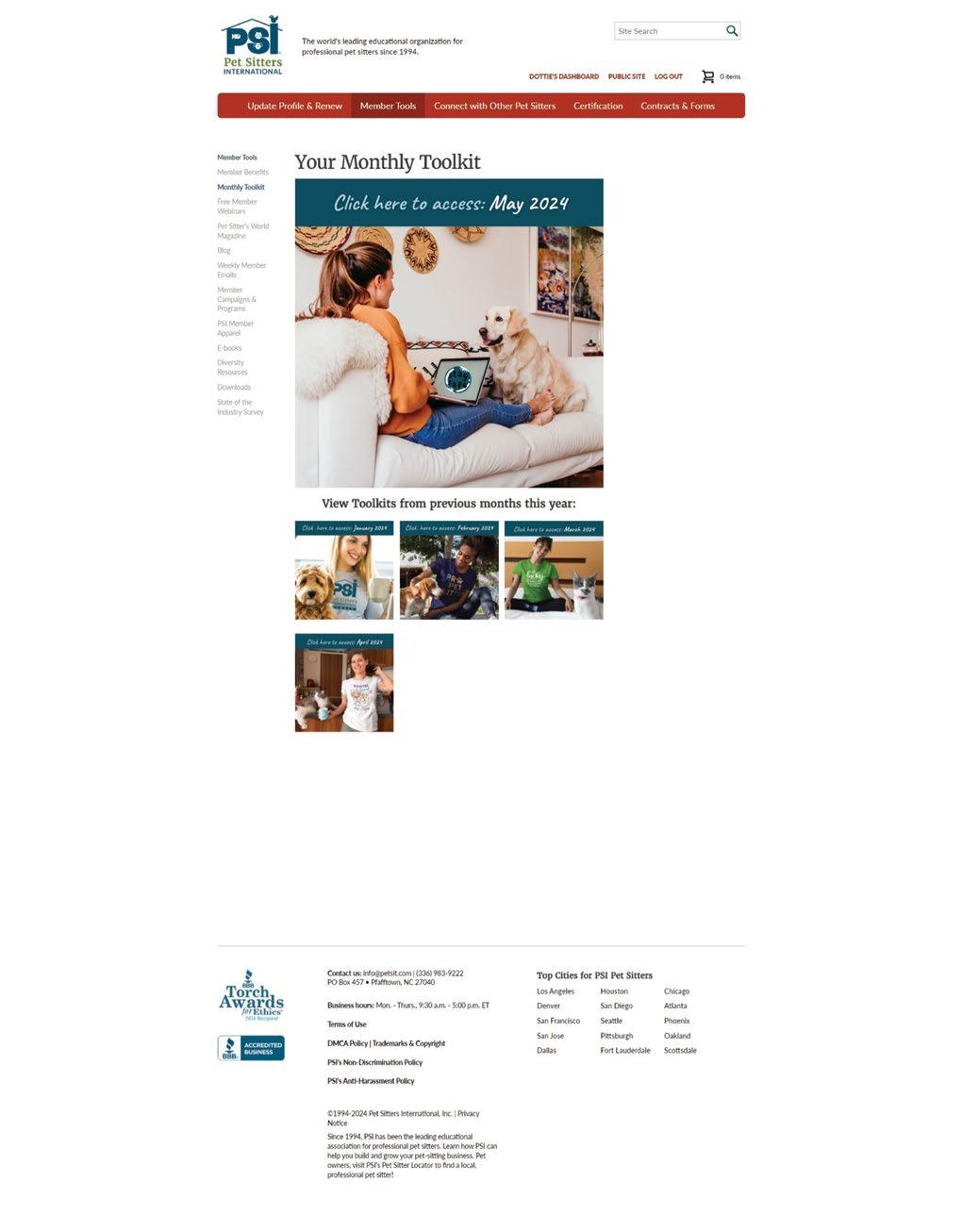







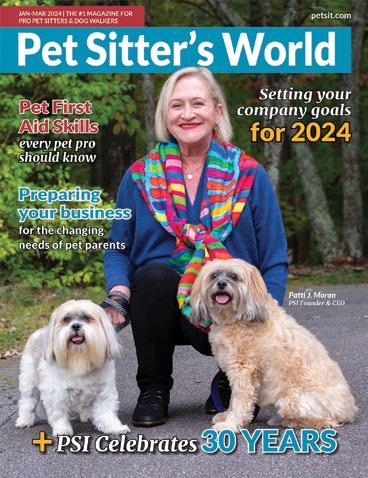

BRENDA S ANTHONY
Crazy for Critters Pet Sitters LLC Danielsville, PA
QUINN ATTIKA
Dogs Love Quinn LLC West Palm Beach, FL
MICHELE BALSER Sunrise, FL
VICTORIA BATES
Galveston Pet Sitters Galveston, TX
NICOLE BLOOR
Your Furry Godparents LLC Byfield, MA
MARA BRIERE
PTP RV Pet Care Bethlehem, NH
ANTHONY BRUNS
Safe Pets Trust Columbia, MO
THERESA CAMLOH
Island Tails, LLC
Hilton Head Island, SC
to these PSI members who have recently earned the designation of CPPS-Certified Professional Pet Sitter®:
SARAH CHAHY
Sarah The Sitter, LLC Lakewood, OH
RAMONA CORONADO Pasadena, CA
KIMBERLY DILLON-CAILLES
Kitty Whiskers Cat Sitting Services Forest, VA
ROXANNE DOCKTER Pet Nation Omaha LLC Omaha, NE
JULIE ELLIOTT
Bestie Beasties, LLC West Melbourne, FL
ROXANNE GORMAN
Catering Critter Sitters The Woodlands, TX
JUDY HACKWORTH
Home and Away Select Specialty Services Omaha, NE
EMILY HALLMAN Pets and the City Brigantine, NJ
JADA HATHAWAY
Rainbow Mutt Pet Care Inverness, Highlands United Kingdom
SHOSHANA BETH
HELFER
Shoshie’s Pet Sitting Doha, Qatar
LYNNE HICKMAN
Furever Furiends Pet Sitting LLC Orlando, FL
KRISTIN
HOLZAPFEL
Pampered Pupperinos & Pals, LLC Omaha, NE
NANCI HOPPERTON
Southwest Petsitting Olmsted Falls, OH
JOSH JURMAN
JJ’s Pet Services Commack, NY
CRIS KREER
C’s Happi Paws Englewood, FL
ASHLEY LEONE
Ashley’s Paws and Claws Export, PA
ELIZABETH LOPEZ
The Pet Lady Houston, TX
MARINA LOPEZ
A+ Loving Pet Care LLC Newport, NH
KATHARINE MCKEOWN FOR THE LOVE OF ANIMALS LLC Corrales, NM
LISA MOFFAT
Posh Pups and Motley
Mutts Dog Walking Surrey, BC Canada
STEVE NILSEN
Anchors Away Home & Pet Care Louisville, KY
SARAH OLSON
Fur & Feathers Pet Sitting Waukesha, WI
LEENA PATEL
Patel Pet Sitting Ballwin, MO
AMY PENOKIE Green Bay, WI
SUSAN
RYAN-BOHUSLAVIZKI Trabuco Canyon, CA
ALEX SKLUT
Great and Small Pet Care Richmond, VA
BRENTLEE THOMAS
International Caretakers Noble, OK
CHARMAINE TRUMPER
Fuzzy’s Pet Sitting Cloverdale, CA
TONYA WATERS
Bows and Bones
China Grove, NC
RICHARD S WEINER
A Refuge for Saving the Wildlife, Inc Northbrook, IL Phoenix AZ
Congratulations also to these members for renewing their CPPS® designation for an additional three years:
LISA BARROS
3 Happy Dogs, LLC Thornton, CO
LINDA BAUMERT
Anytime Critter Care Henderson, NV
WENDY BLACKSTONE
Pet-Rageous Jacksonville, FL
ROBIN BLAKESLEY
Over the Moon Pet Sitting Canandaigua, NY
LINDA BLOOMER
Animal House Critter Services Powell, TN
KENNETH BOTTS
Creekside Critters Pet Sitters Fort Worth, TX
CAITLIN BRODY
Cait’s Creature Comfort Vancouver, WA
KATIE CASELL
Dances With Dogs, Inc. Miami, FL
MARTHA CONRAD
Angel’s Pet Care Louisville, CO
CHRIS COOPER
Glad Wags Bradenton, FL
ERIN CRENSHAW
Hoof and Paws Pet Care, LLC Raleigh, NC
MARY CATHERINE CROSS
Walkin’ Waggums Pet Services Oakland, CA
MIRANDA CROSSLEY
Lighthouse Pet Sitting of Cape Cod Hyannis, MA
JOCELYN
DAVEY-HAWRELUIK
Furbaby Pet Care Inc Saskatoon, Saskatchewan Canada
BRENDA DAVIS
Blue Ribbon Pet Sitters, LLC Hackettstown, NJ
ALIX DILORENZO
Homeward Bound Professional Animal Care LLC Gilford, NH
ROBIN DONAHEY Paws 4 Pet Sitting Davenport, FL
LISA RACHEL
DUBOIS
Loving Care Pet Sits Raleigh, NC
ALYSSA DUCLOS
Alyssa’s Critter Sitters LLC Wayne, NJ

TASHA ERICKSON
Pawsitive Adventure Crew Portland, TN
ANGIE GOOD
Nothin’ But Luv Pet Services (NBLPS, INC.) Kihei, HI
JAMIE HOAD
Lazy Days Pet Sitting Service Zebulon, NC
DENISE HOWK
Fetch! Pet Care of Clear Lake Clute, TX
KARIN JOHANSSON Baltimore, MD
KATHLEEN KEEGAN
The Pet Sitter Laguna Hills, CA
KEN KLEIN
Pet’s Best Friend of Tampa Bay, Inc. Clearwater, FL
SHIRLEY KMETT
Shirley’s Purrfect Pet Sitting Hibbing, MN
VALERIE LEONARD Pet Watchers Northwest, LLC Palatine, IL
GWENDOLYN
LOHMAN
Norell Pet Care Wind Gap, PA
ADRIANA LOURETTE
Furr Paws Only Burbank, CA
LADONNA MADDEN
Rocky Top Pet Services Friendsville, TN
KERRY A. MAGINNIS
Loving Care Dog
Walking & Pet
Sitting Service Palm Beach Gardens, FL
JANET MARRA
Furry Friends Pet
Sitting Service Guyton, GA
AMY MARRAH
Mission Valley Pet
Sitting Services San Diego, CA
ELEANOR MCCOY
East Paws Pet Services Inc Lighthouse Point, FL
LEIGH NICOL Portage MI
SUZANNE
NIEDERMAIR
Paws to Heart Pet Care LLC Silver Spring, MD
HELENE O’NEILL
AZ Pawsitively Pets Prospect Heights, IL
LINDSEY PAIGE Paw Prints Around Town Silver Spring, MD
MARY REINBOLD
Angels to the Rescue Pet Sitting Thomasville, NC
MICHELLE ROGLES
Sidekick Sitters of Texas Canyon Lake, TX
KELLY SEBOUR
Maximus & Me Dog
Walking Service & More Havre de Grace, MD
LORRIE SHAW
Telos Companion Animal Services, LLC Dexter, MI
MURRAY SPACKMAN
Waterloo Pet Services Kitchener, Ontario Canada
CHRISTINE SNYDER
Christine’s Toys Paws ‘n Tails Bowdoin, ME
KIM OTTONE TANK
Apronstrings Pet Sitting Pollock Pines, CA
DEEDRA THOMPSON
Pet At Home Sitting Services, Inc. West Palm Beach, FL
DAWN TWAROZYNSKI
Happy Hearts & Tails Pet Sitting LLC Cincinnati, OH
CAMI VELLA
Adventure Pet Sitting Rochester, NY
BOBBI WILSON
Peace Love Paws Pet Sitters, LLC Columbia, MO
SCOTT WILSON
Peace Love Paws Pet Sitters, LLC Columbia, MO
JASON WINTER
JW PETCARE Seattle, WA


